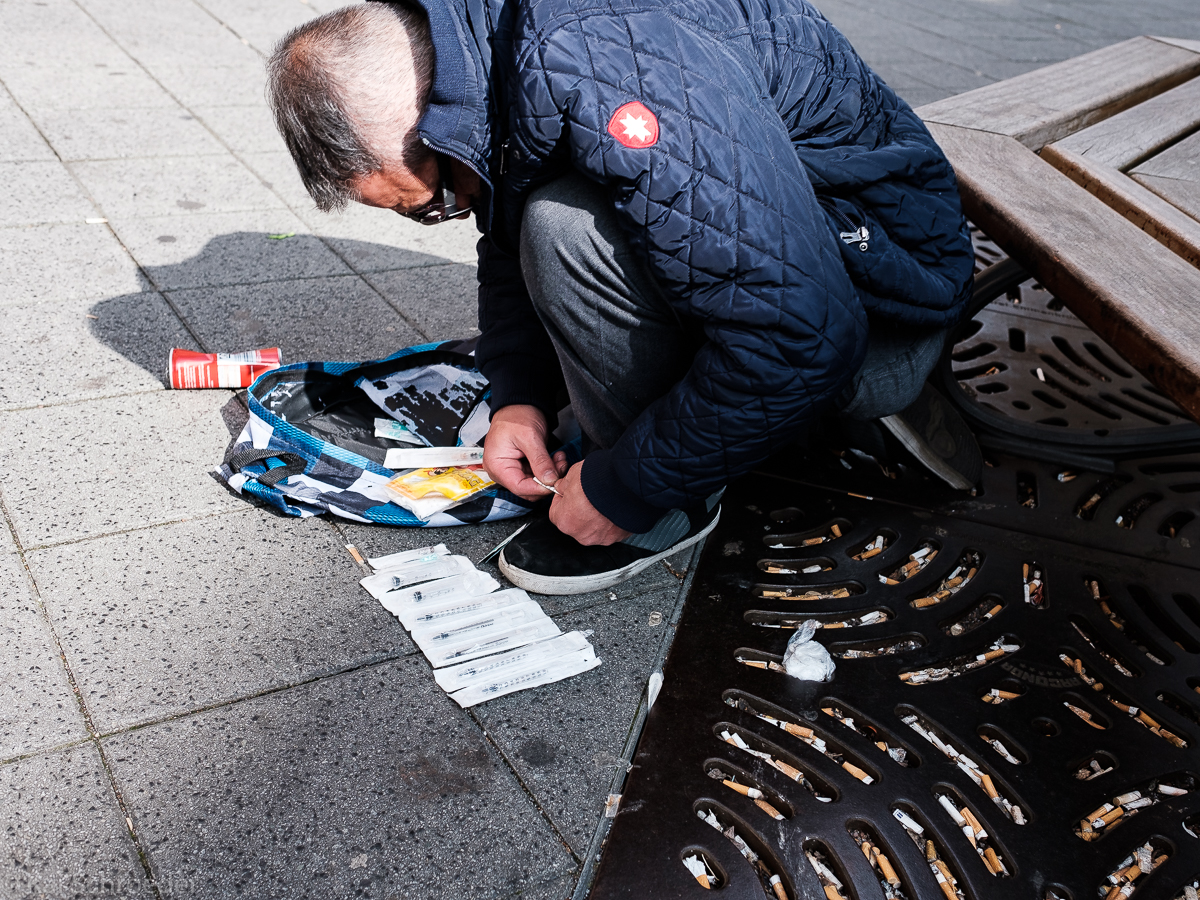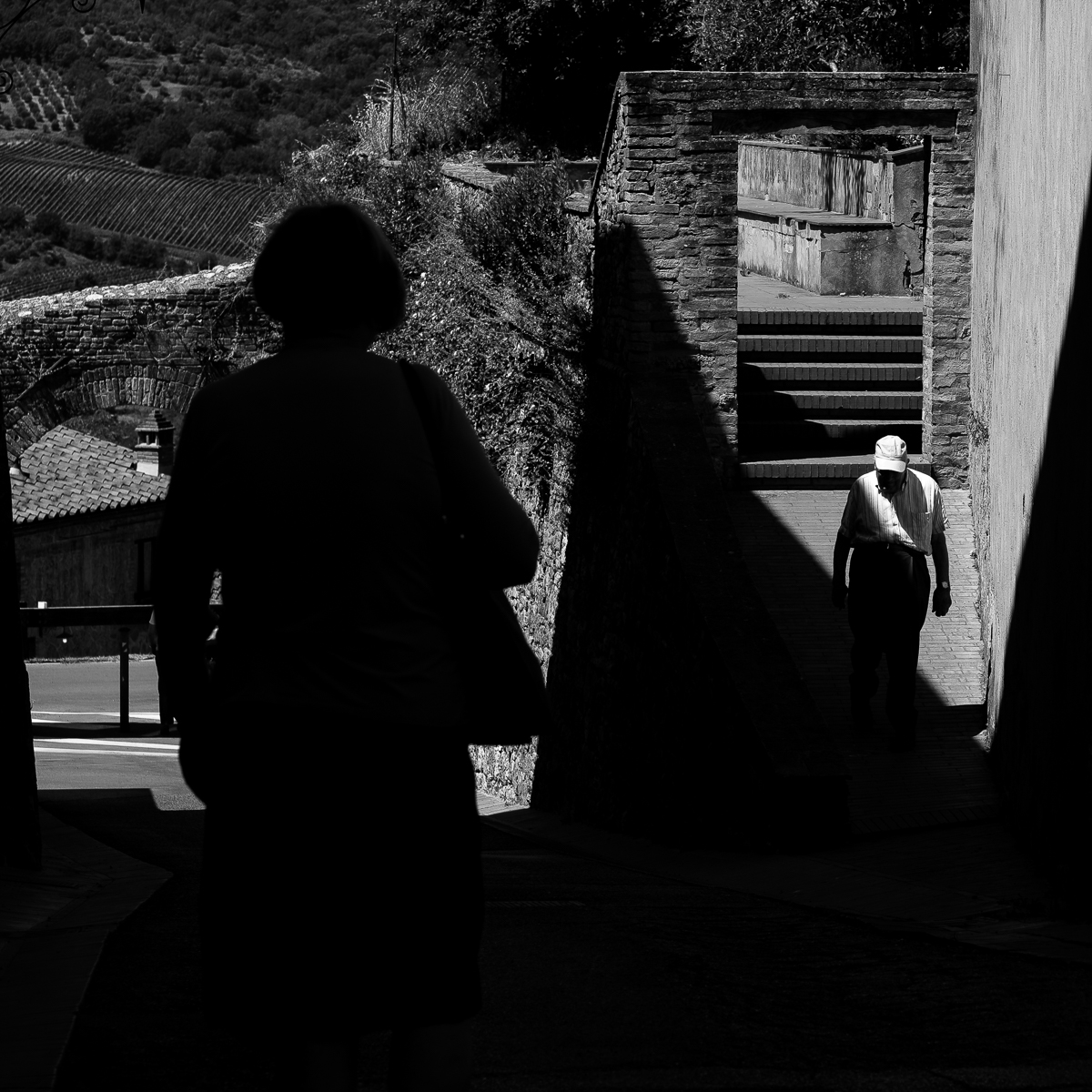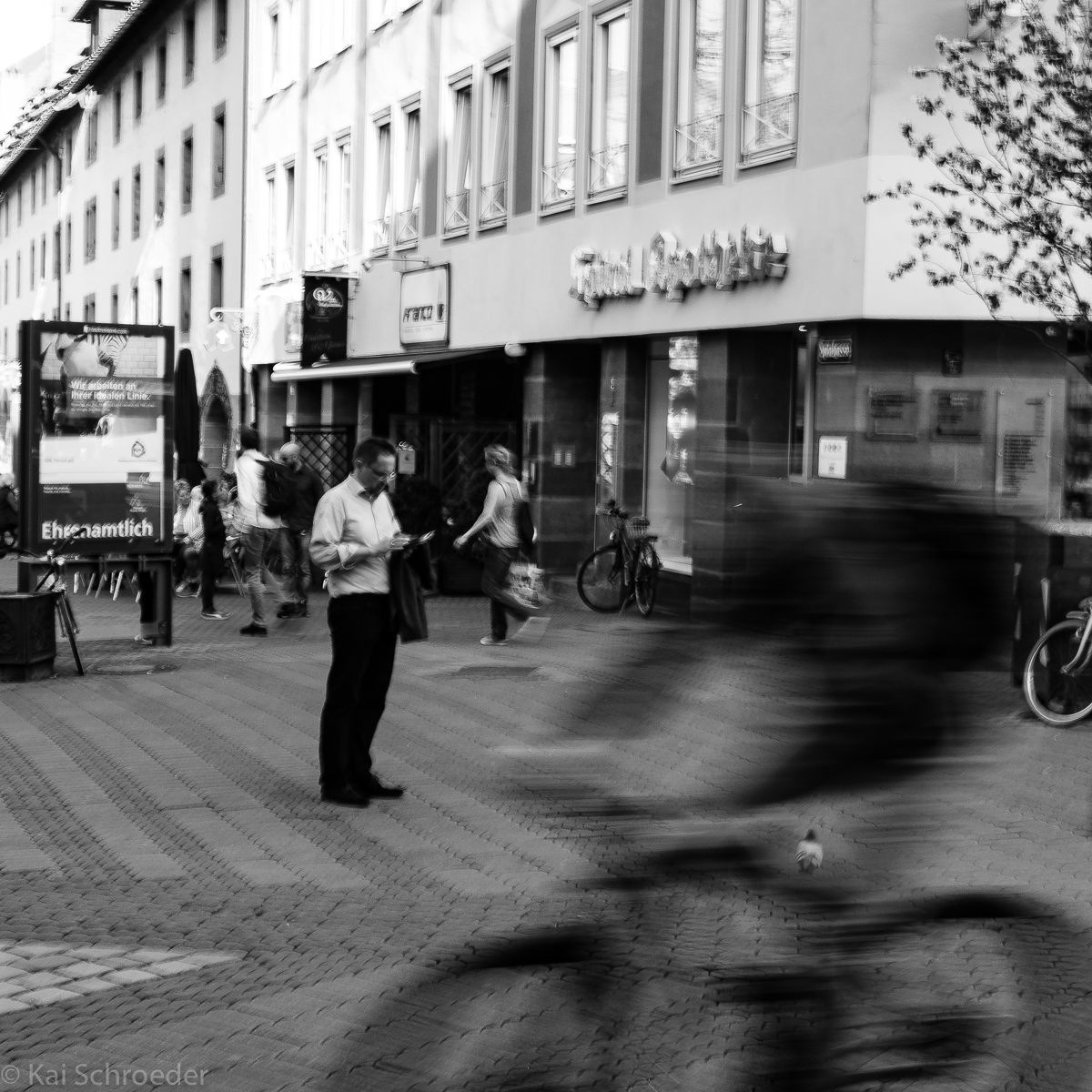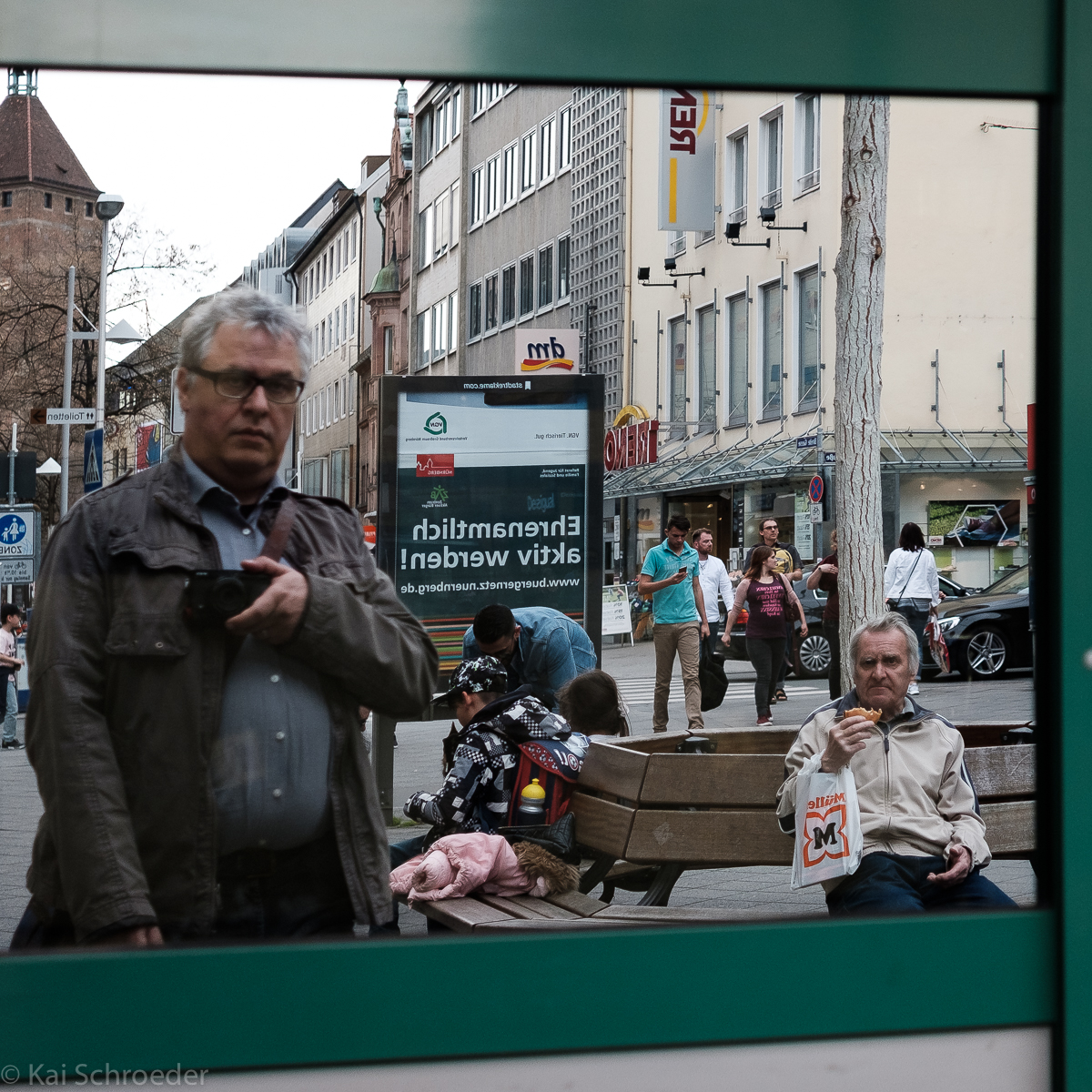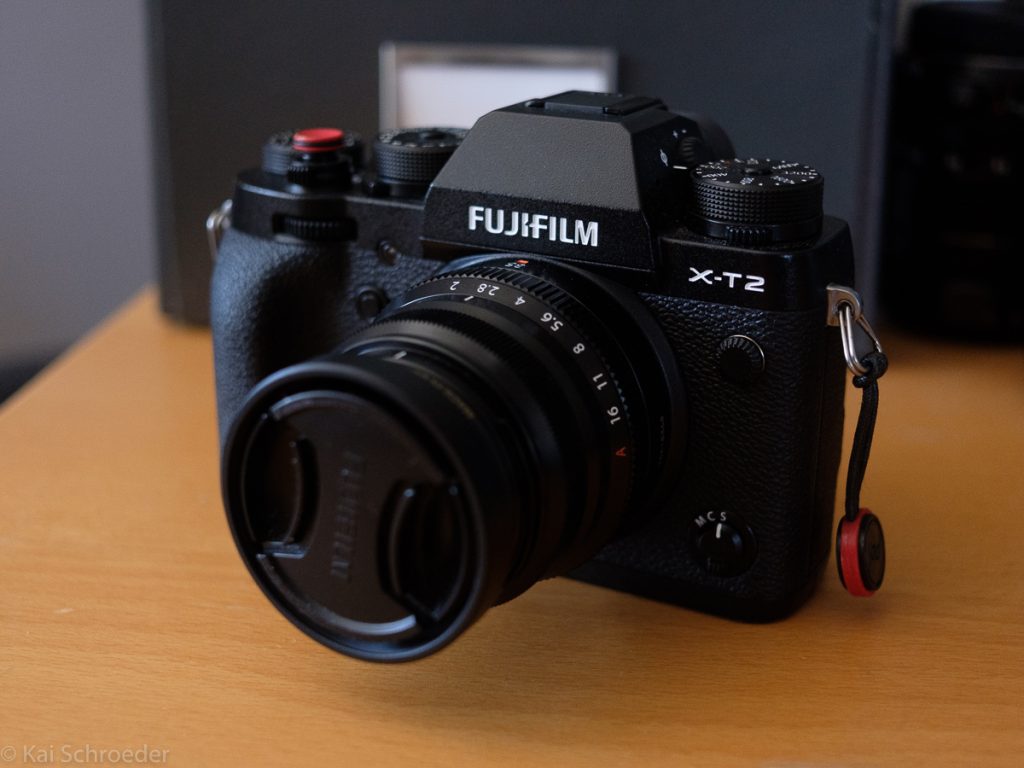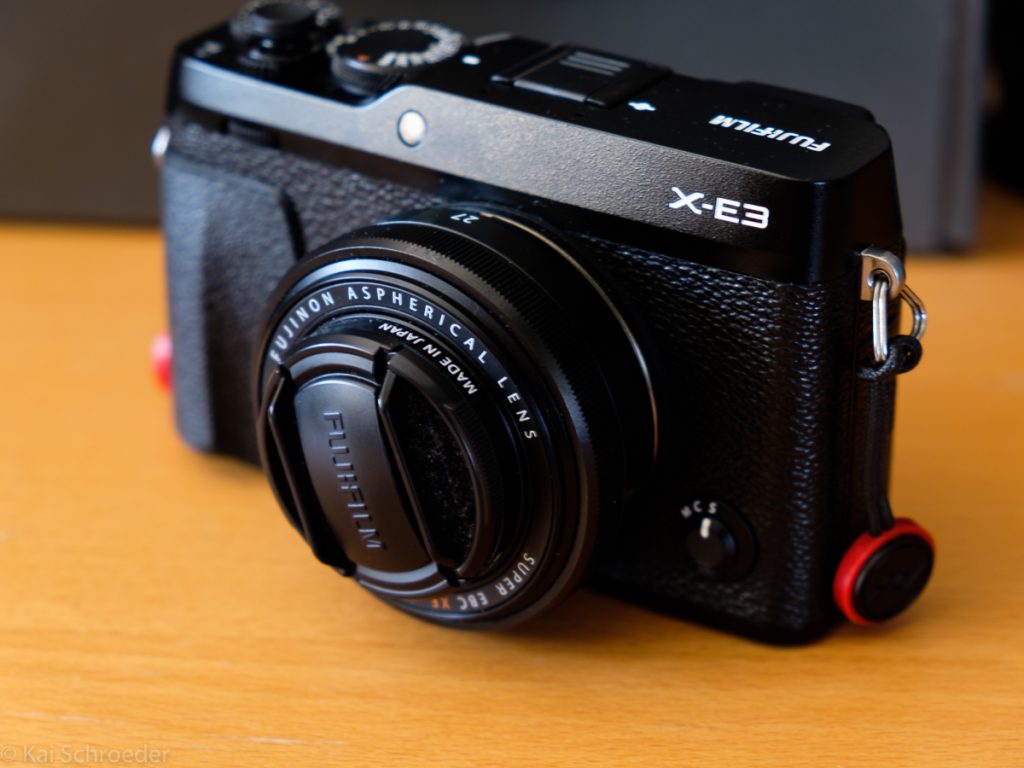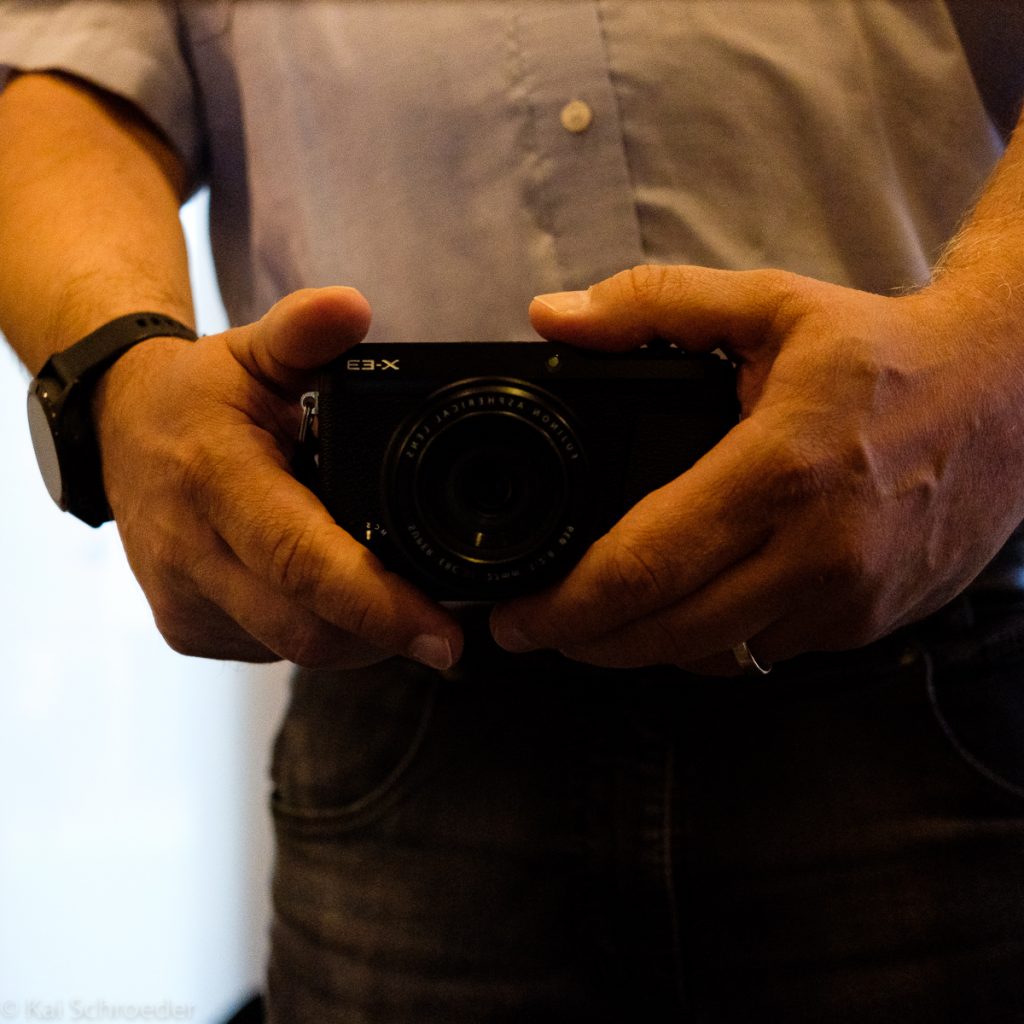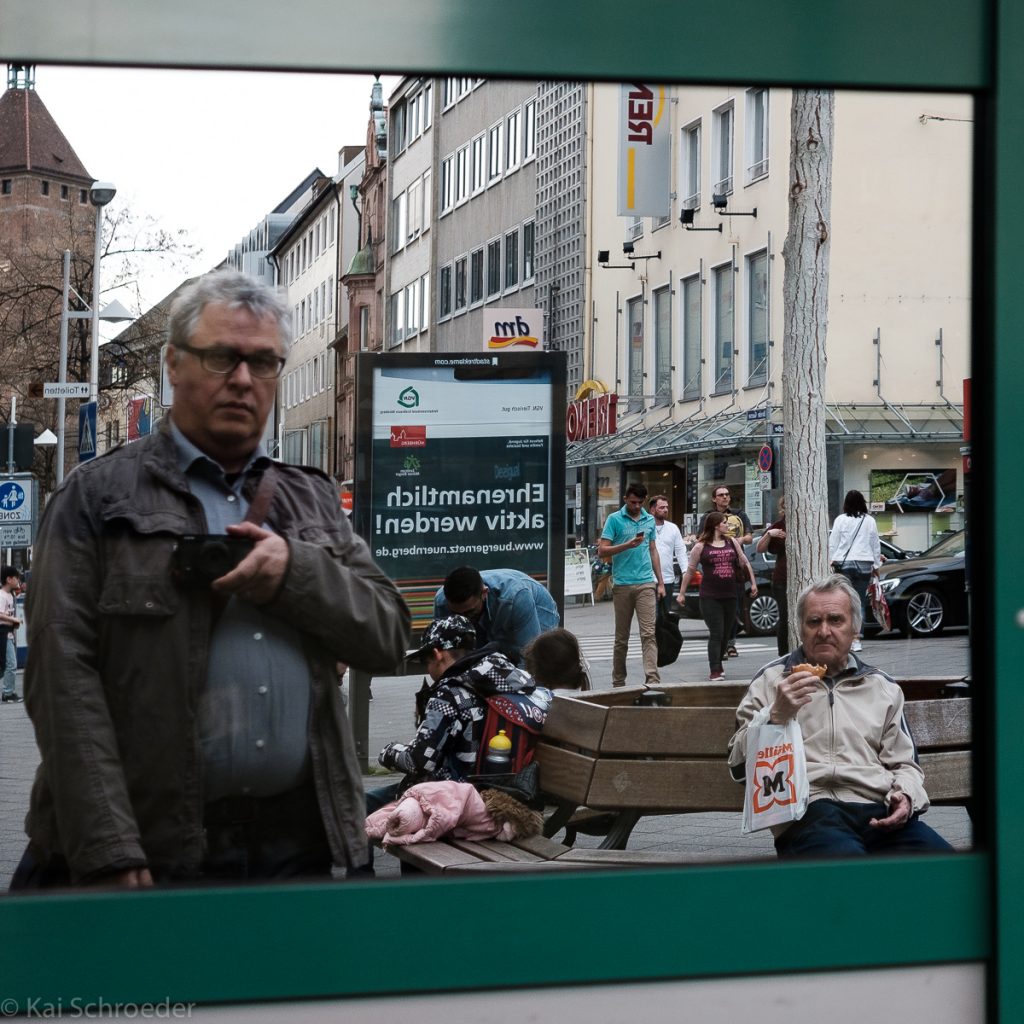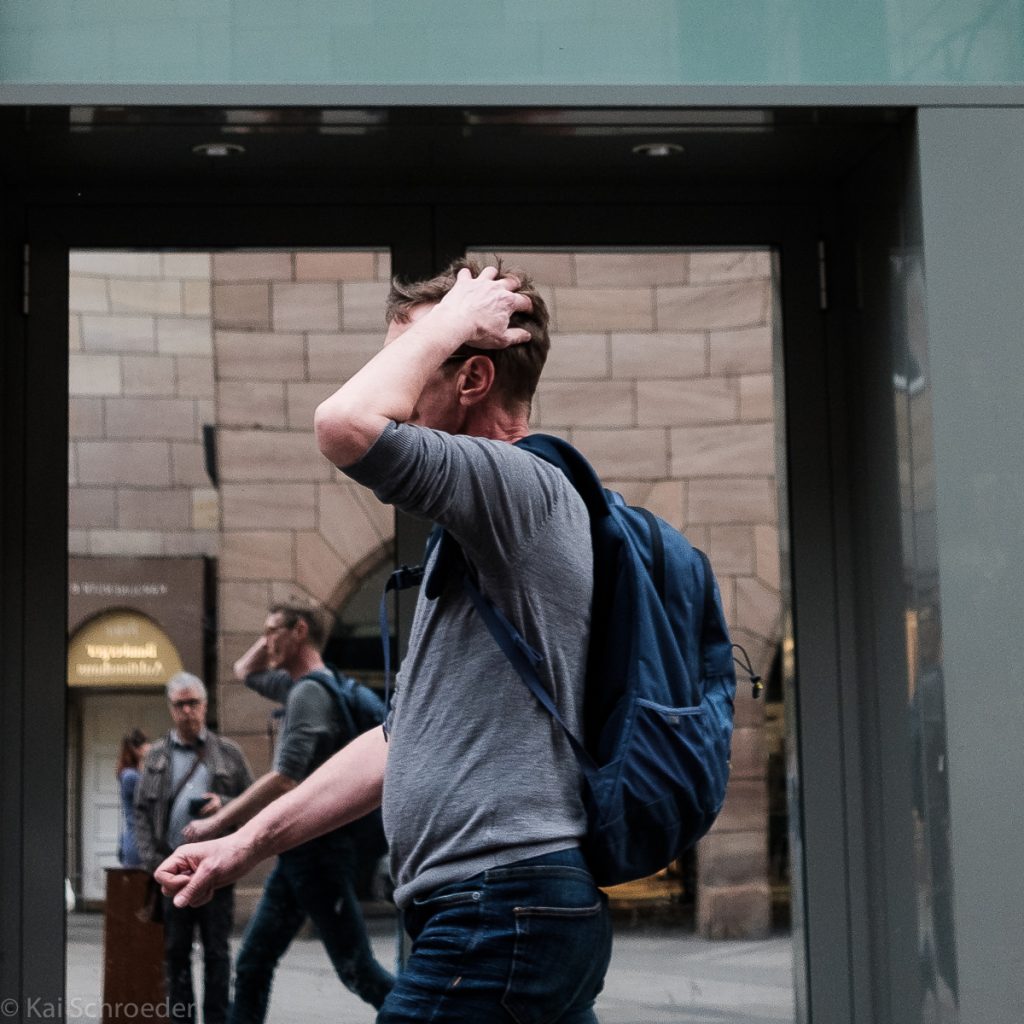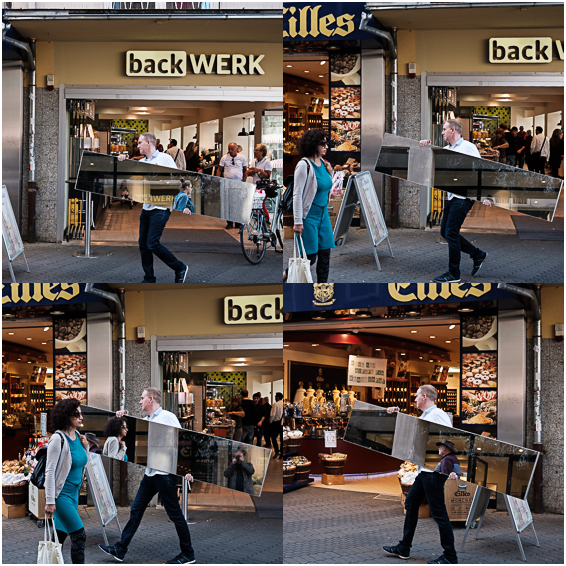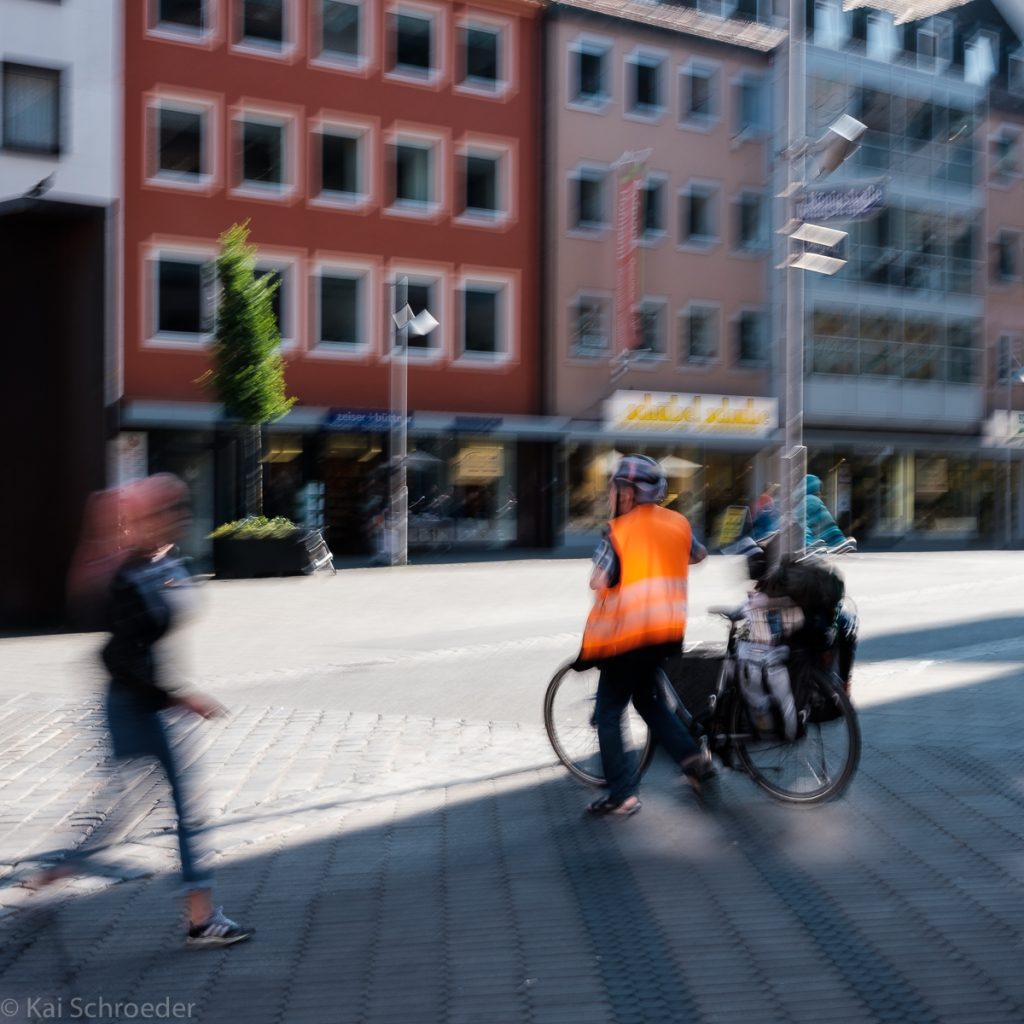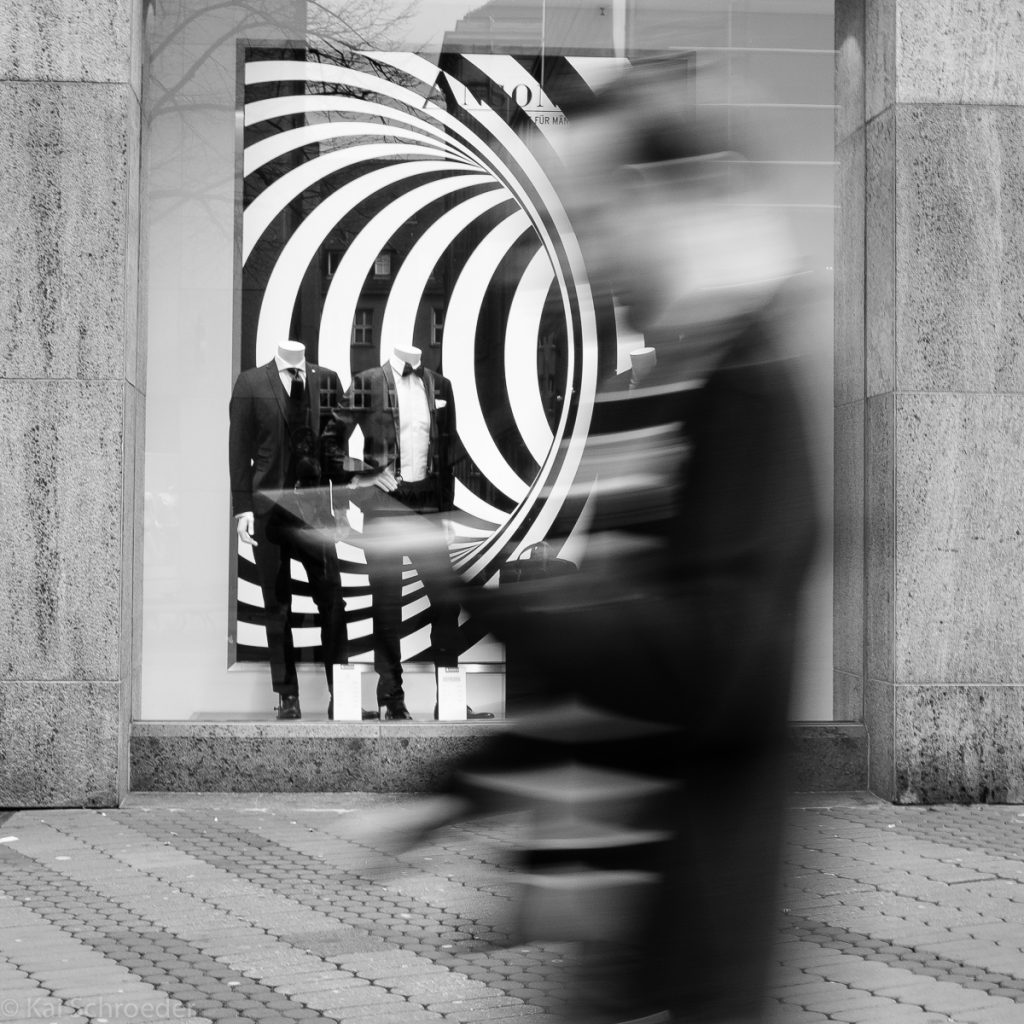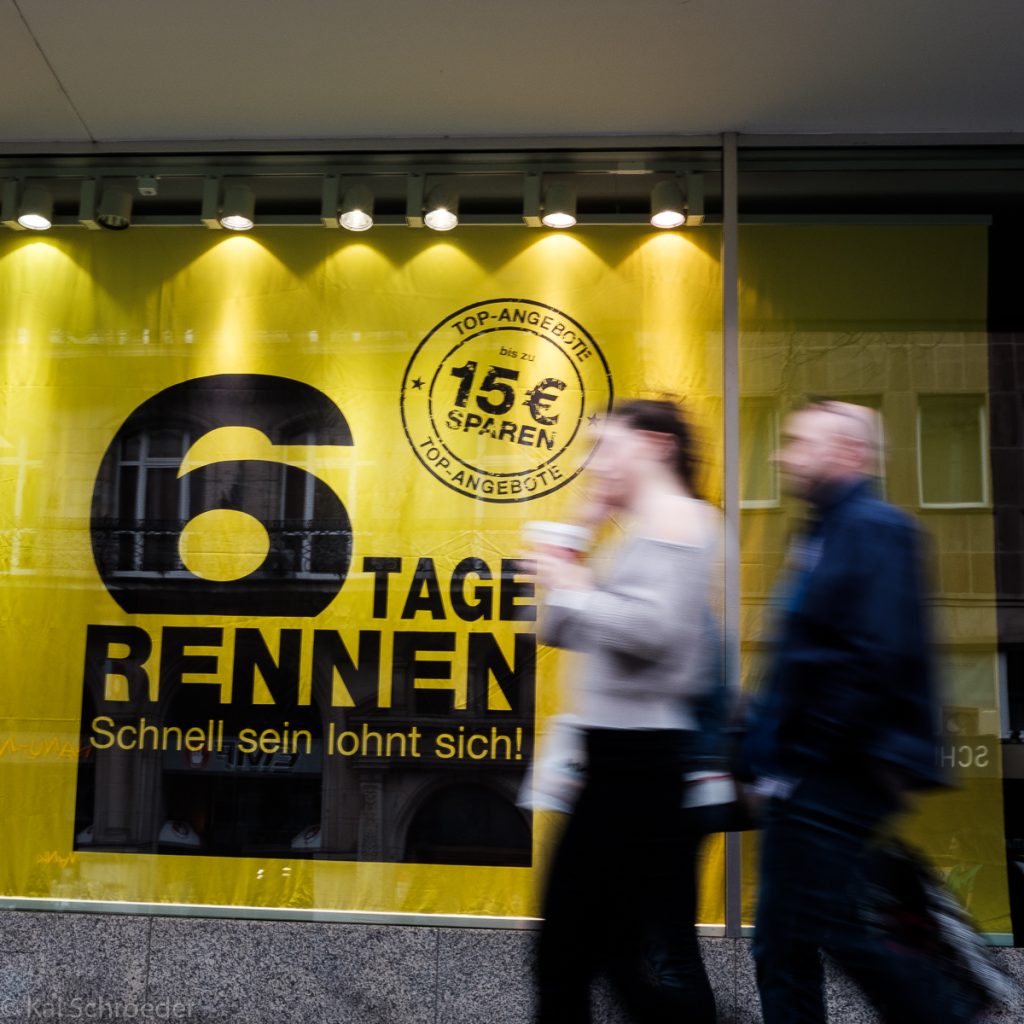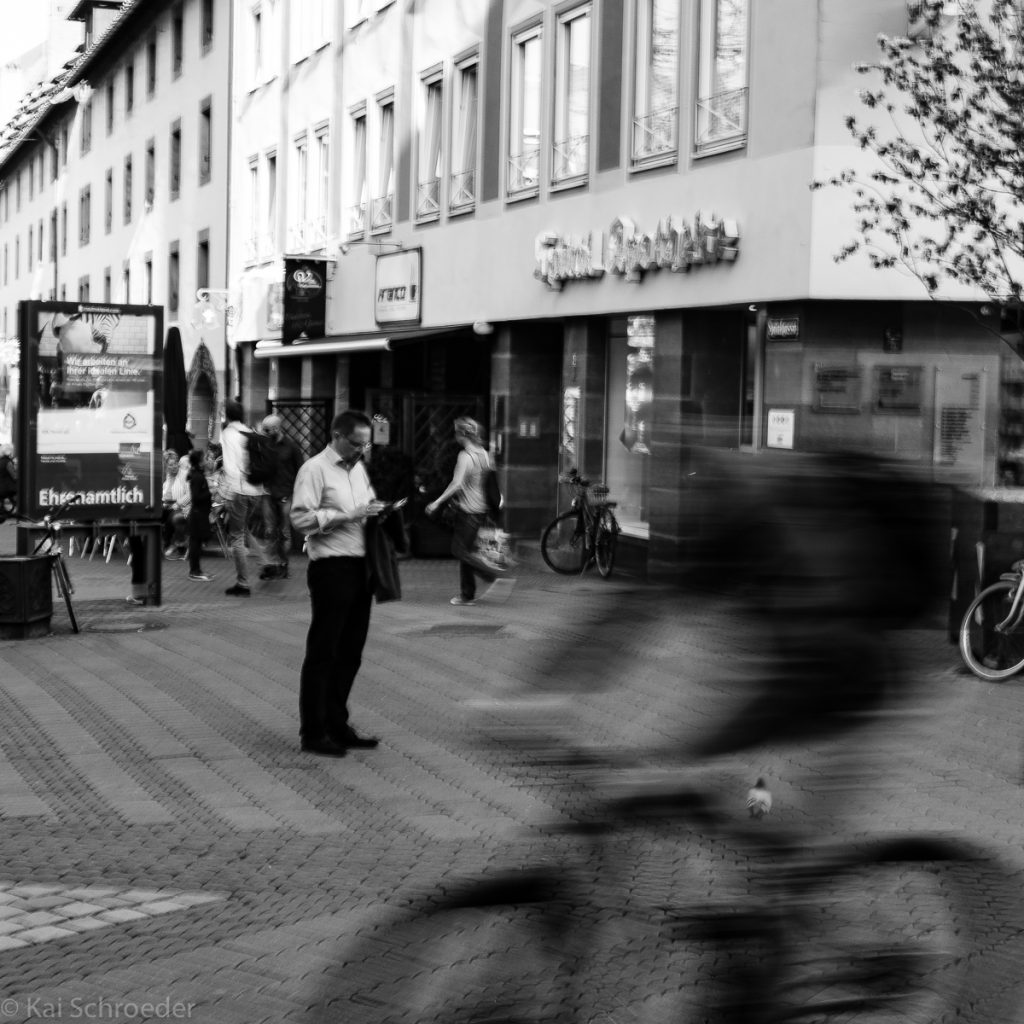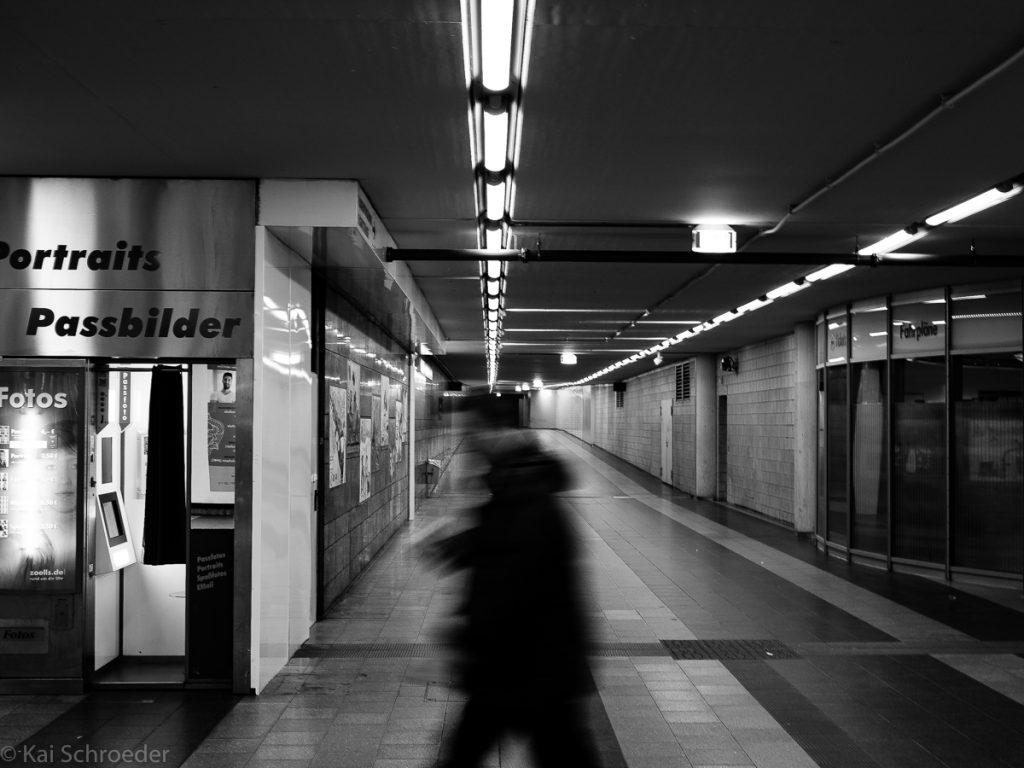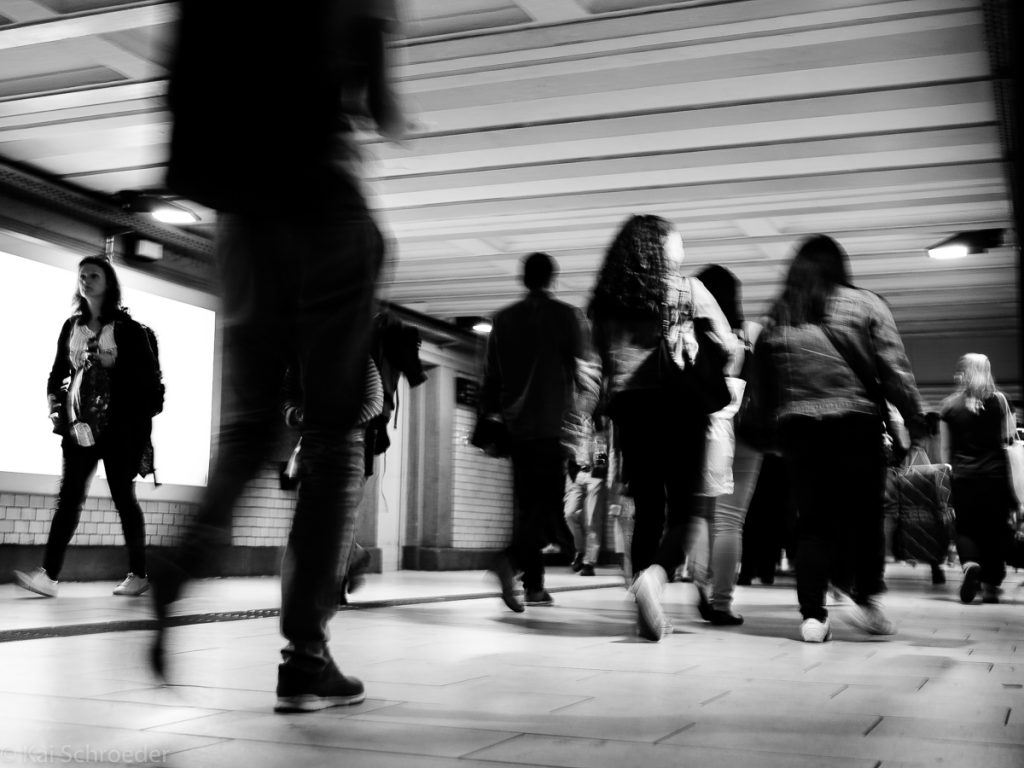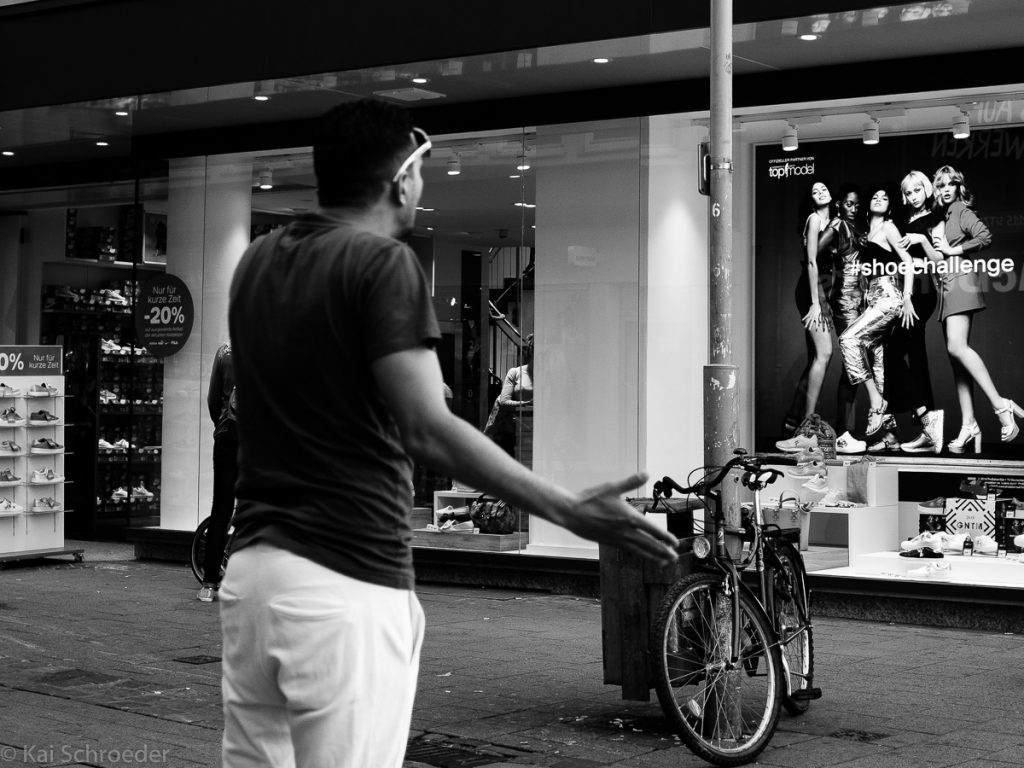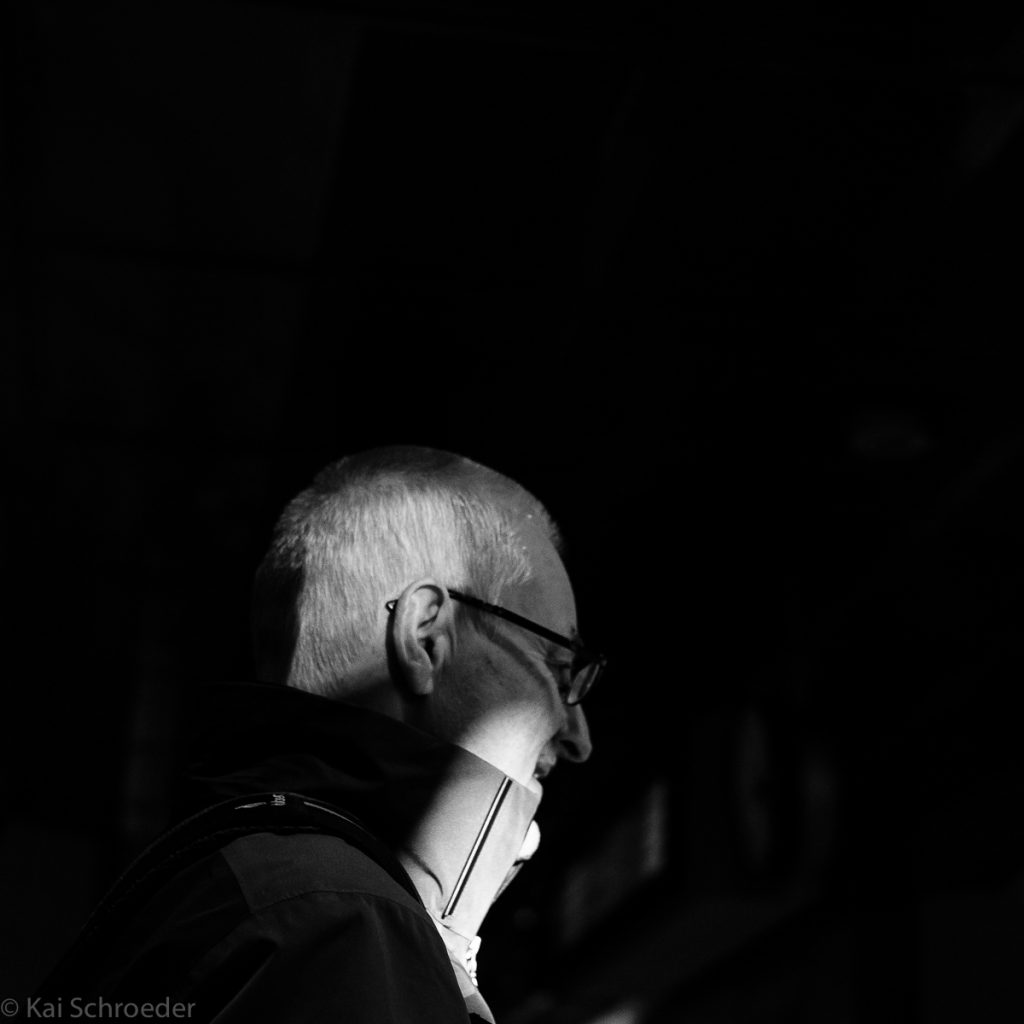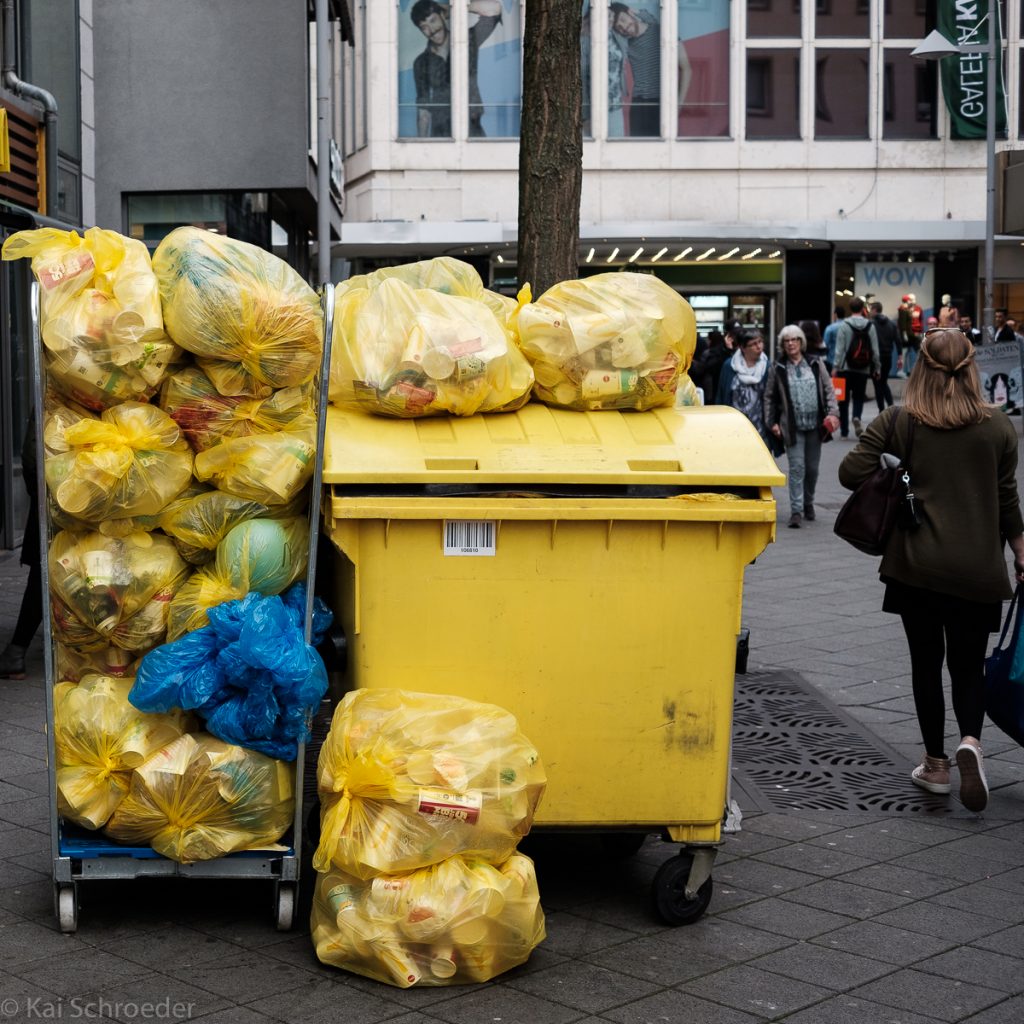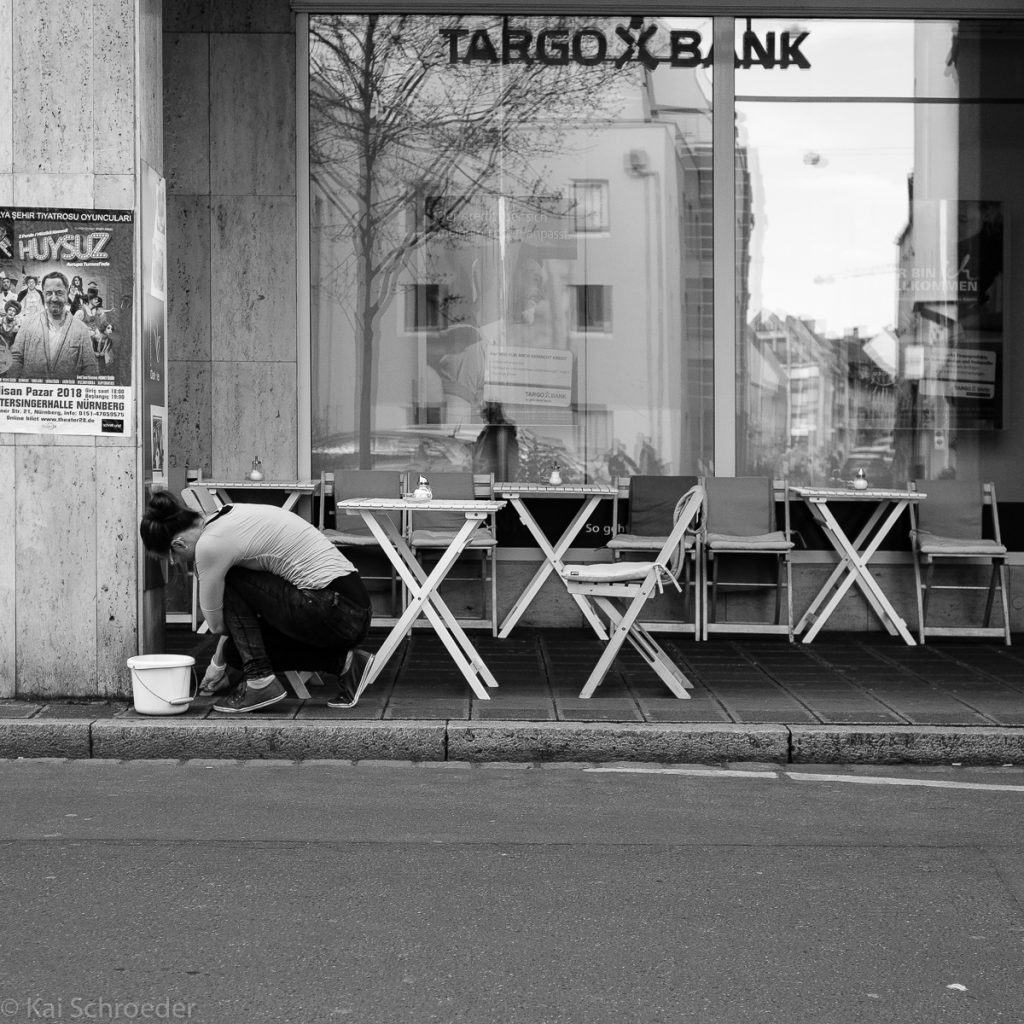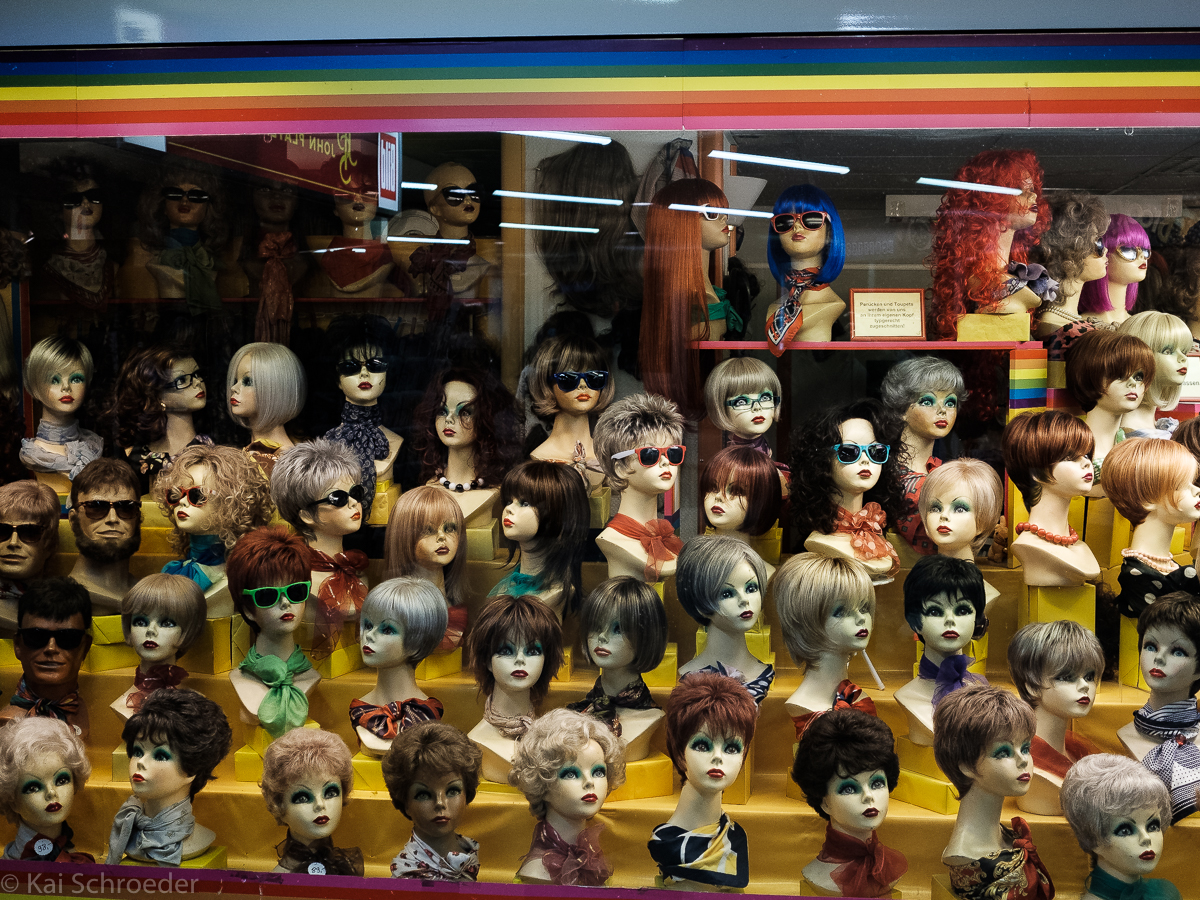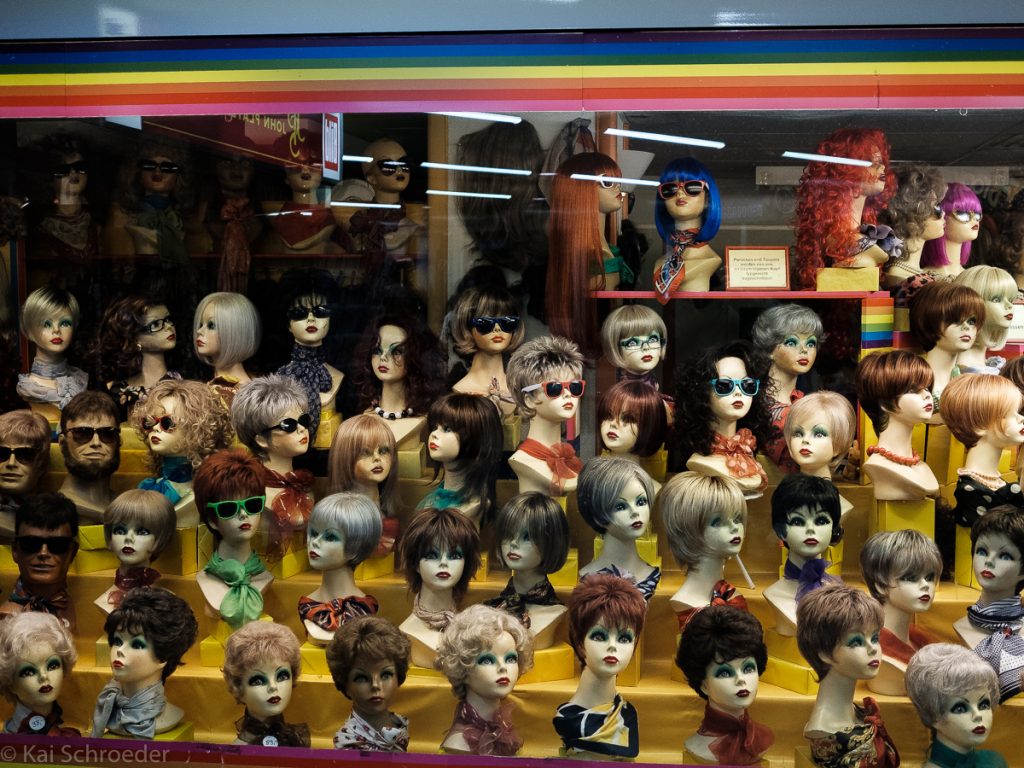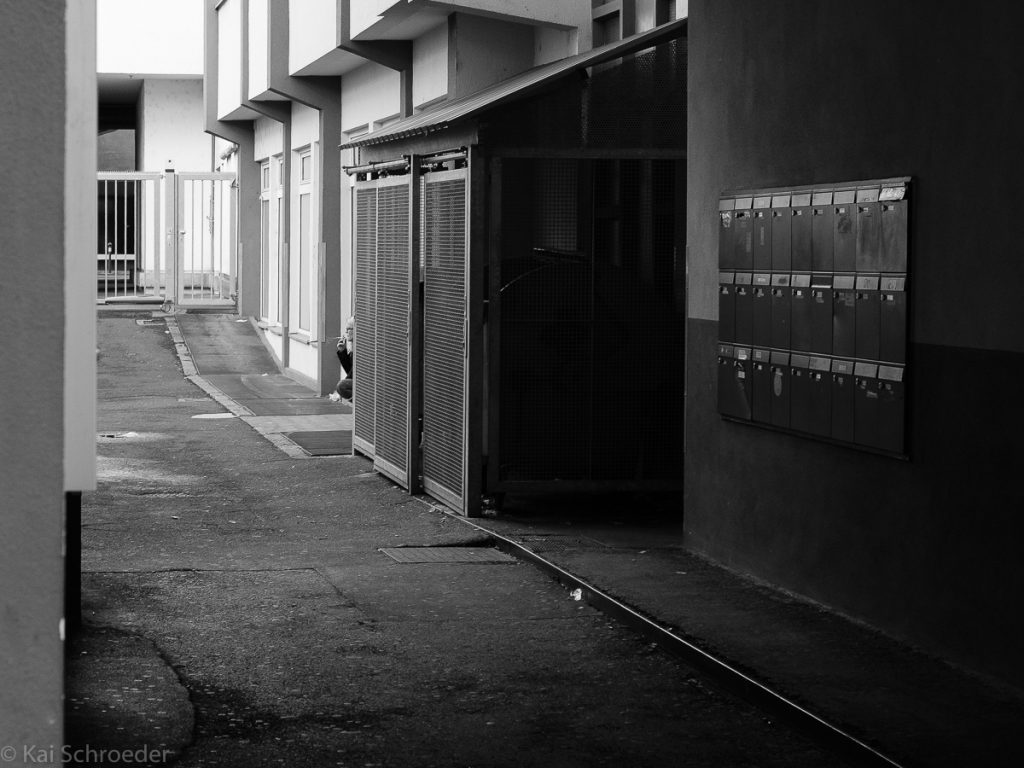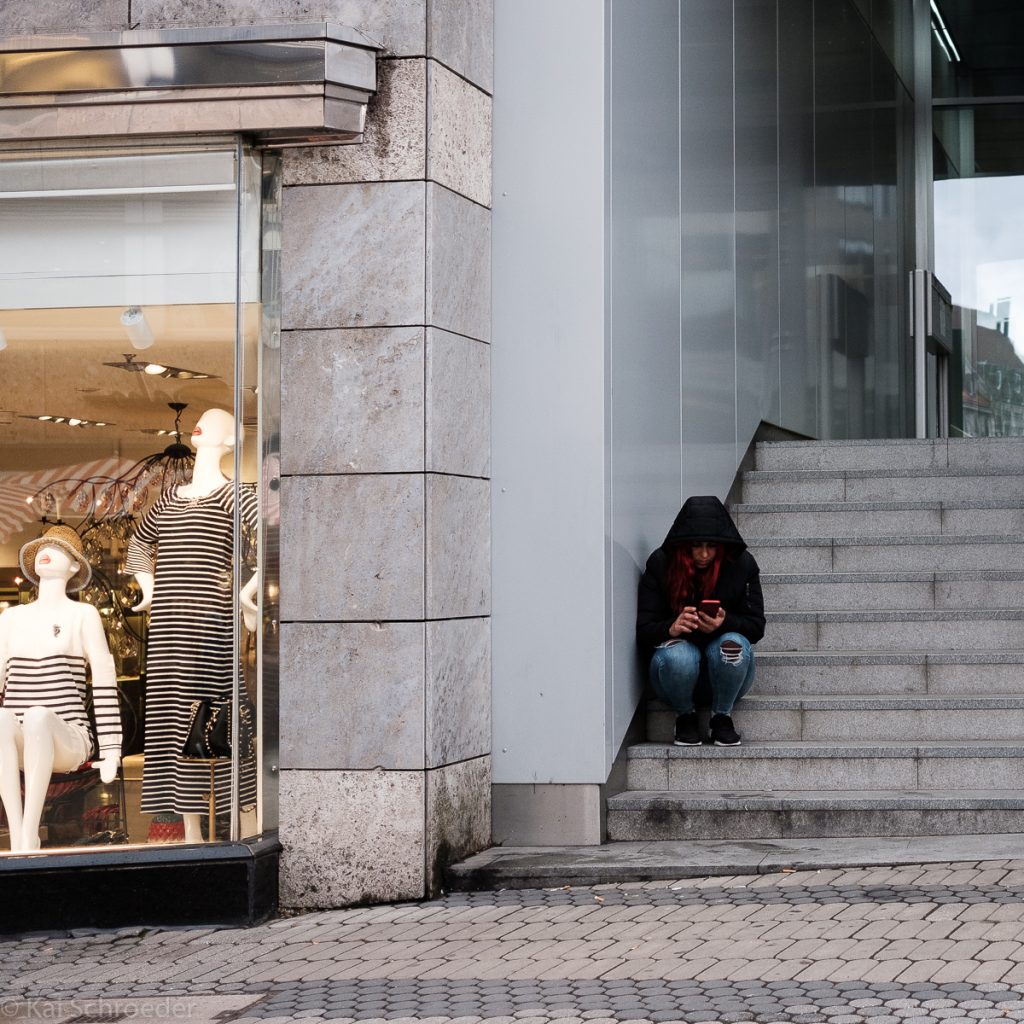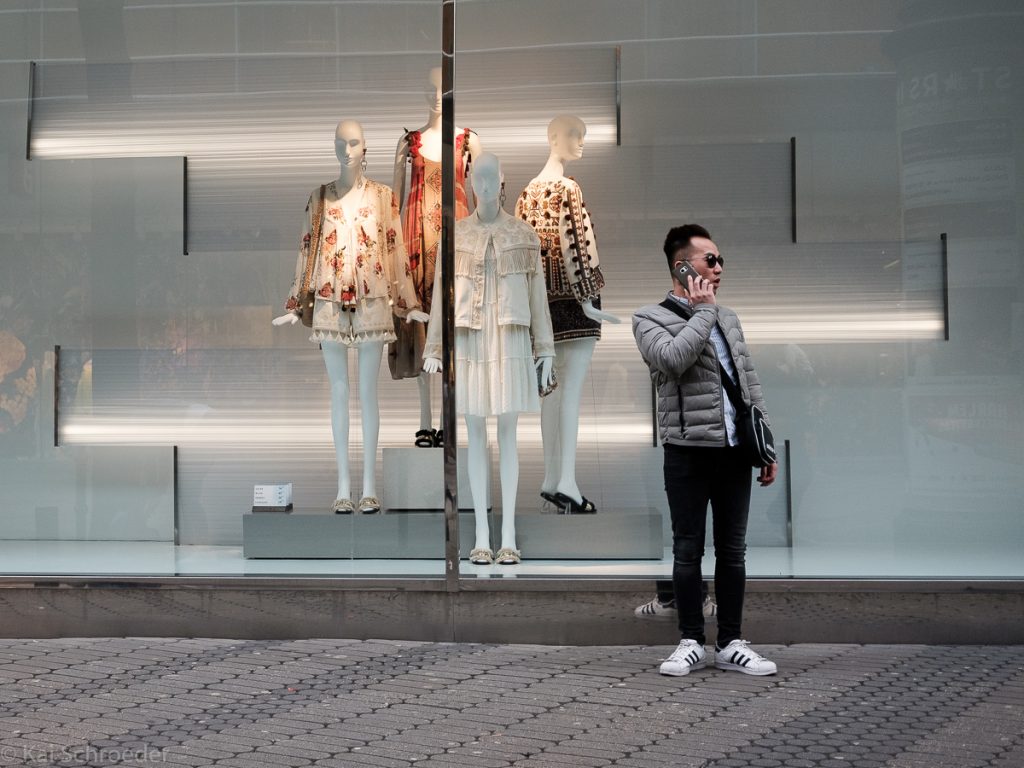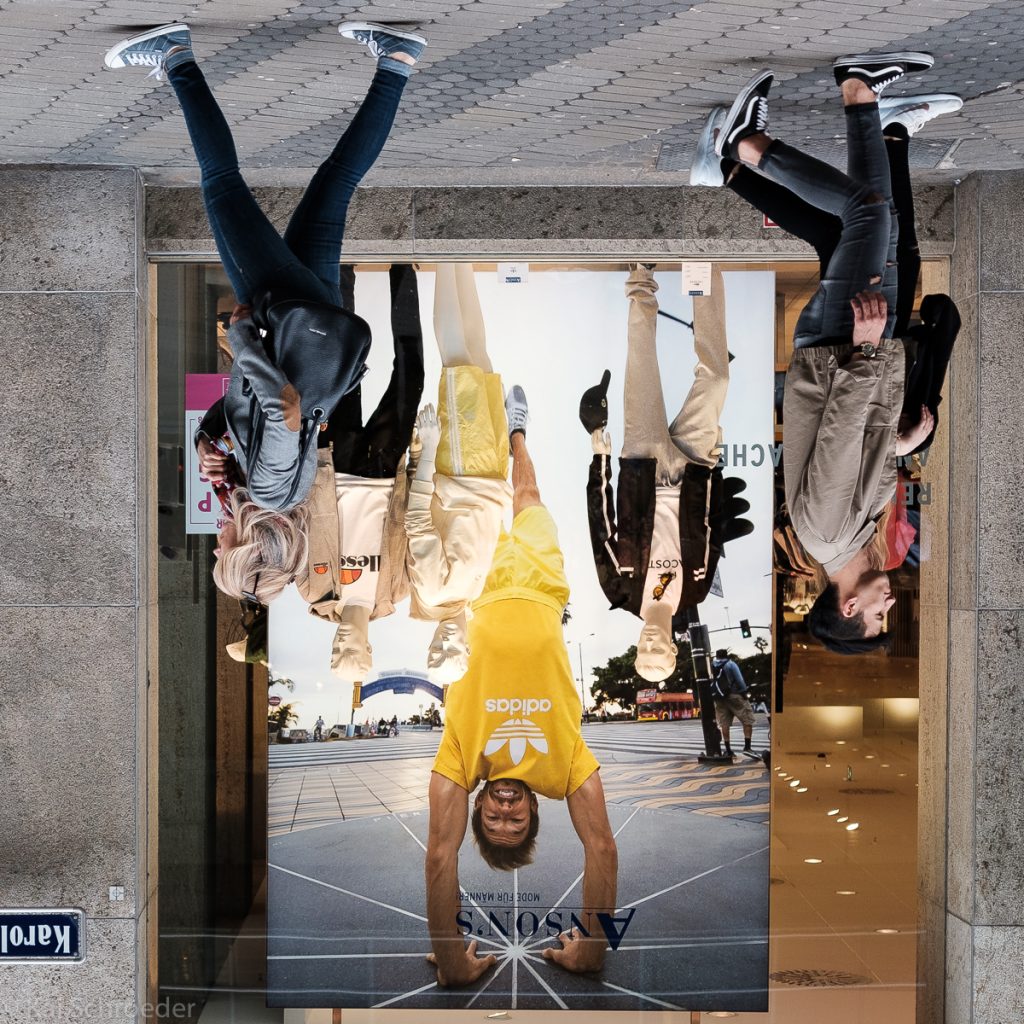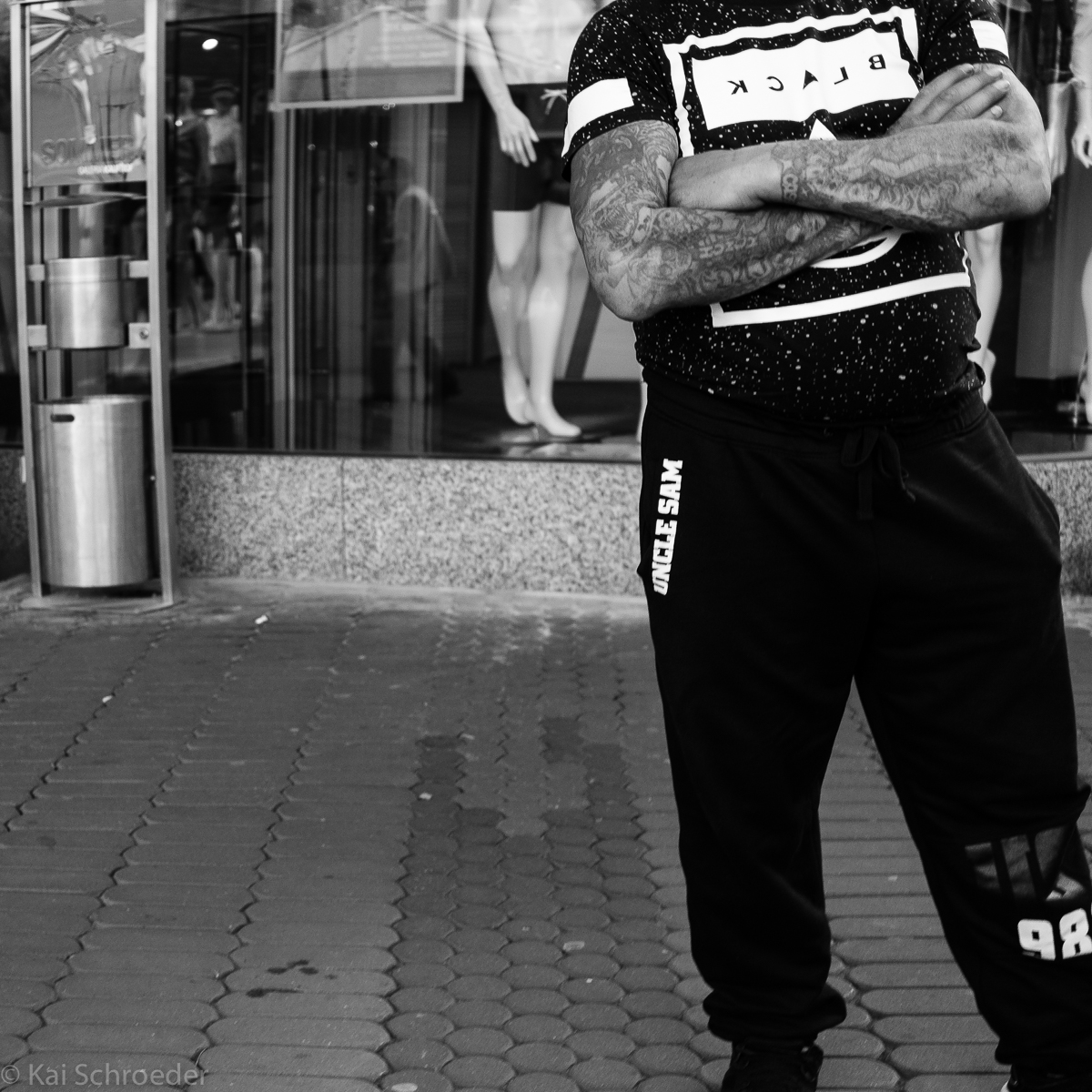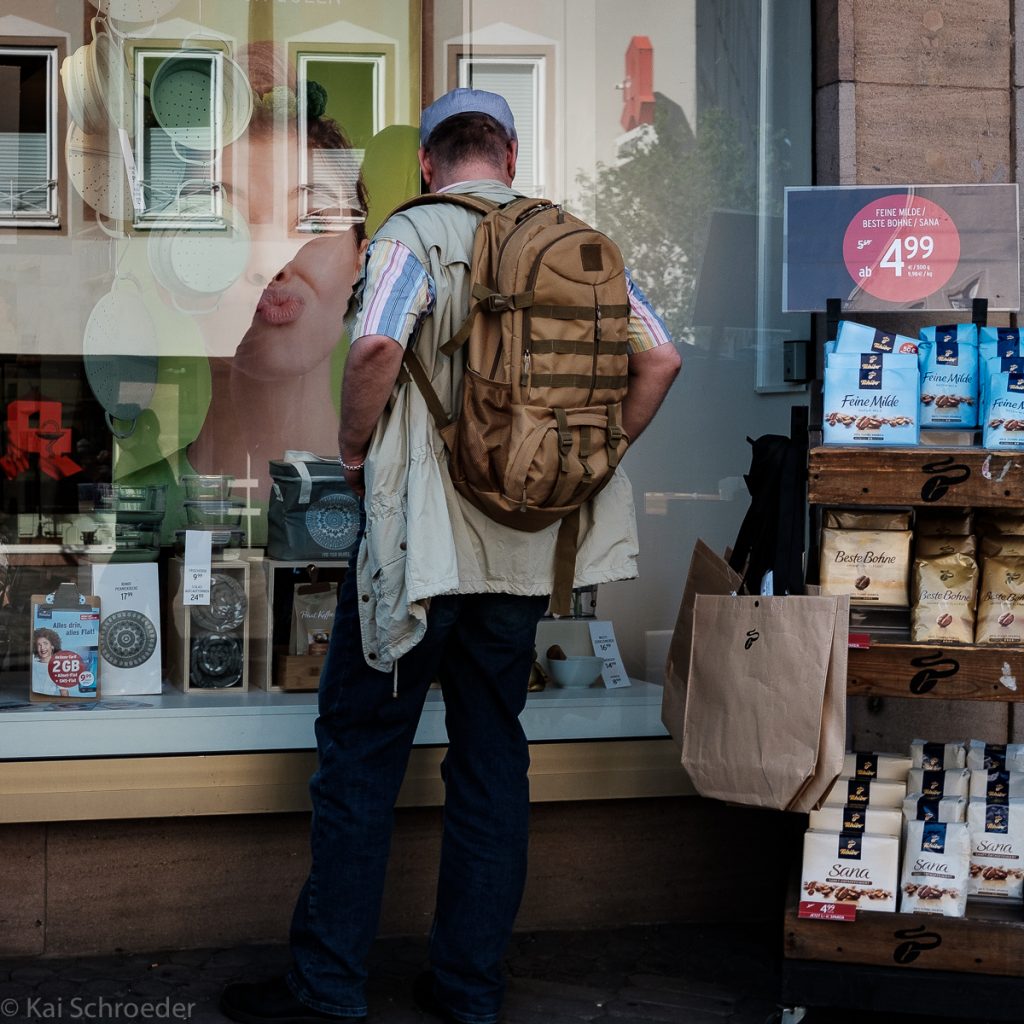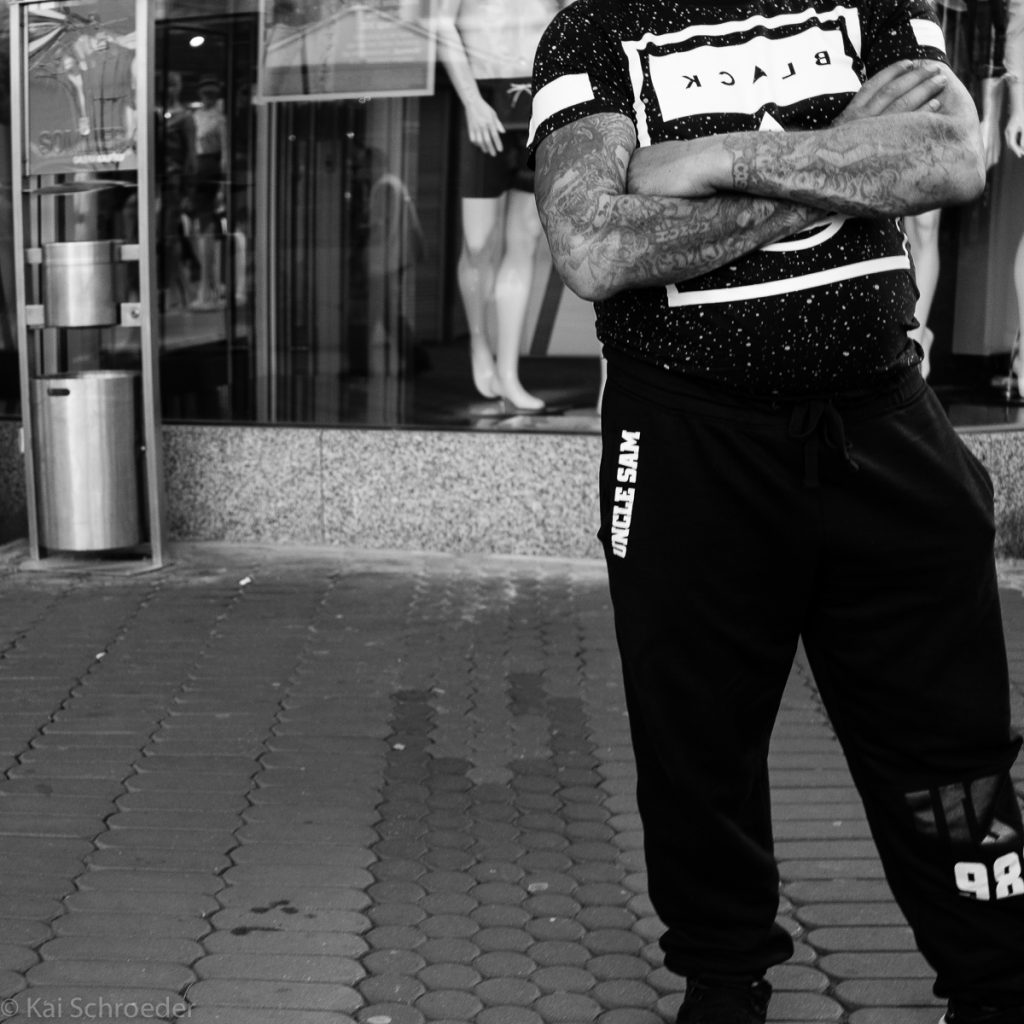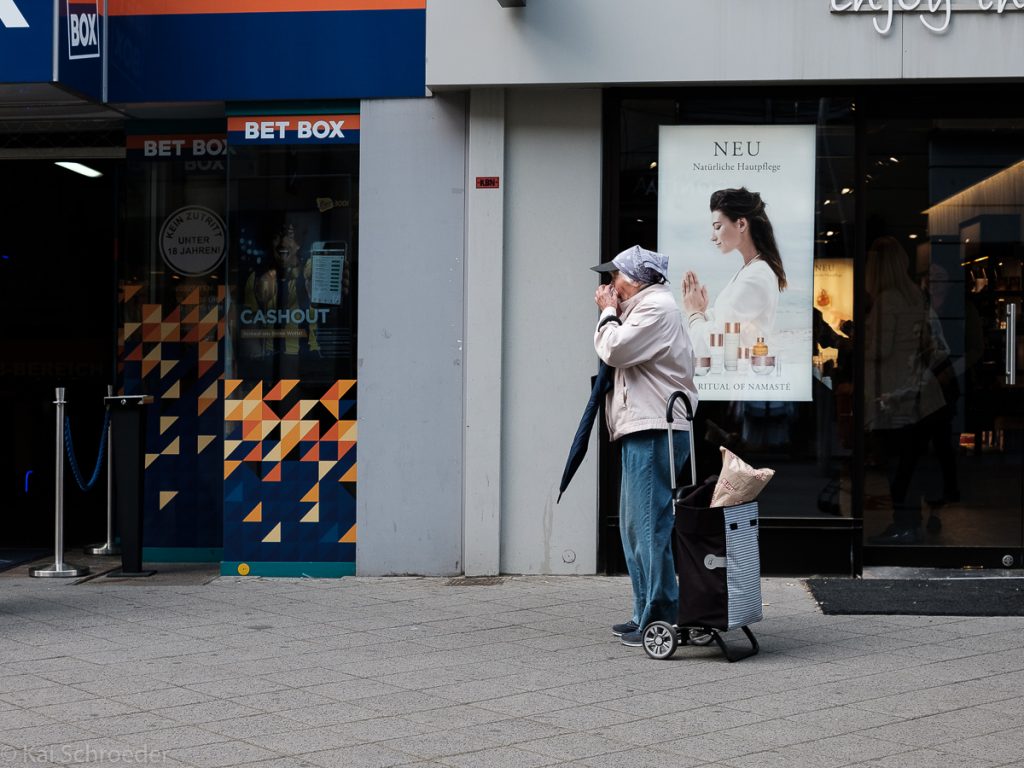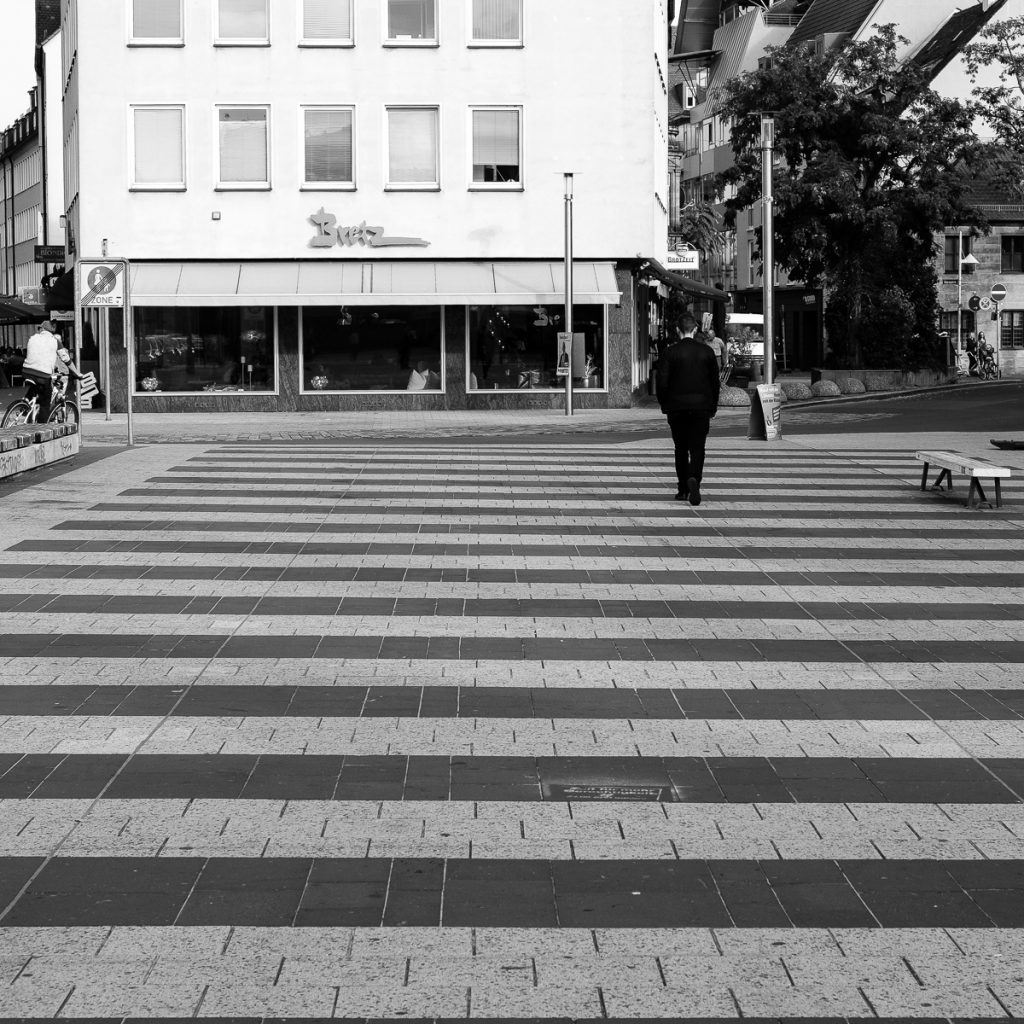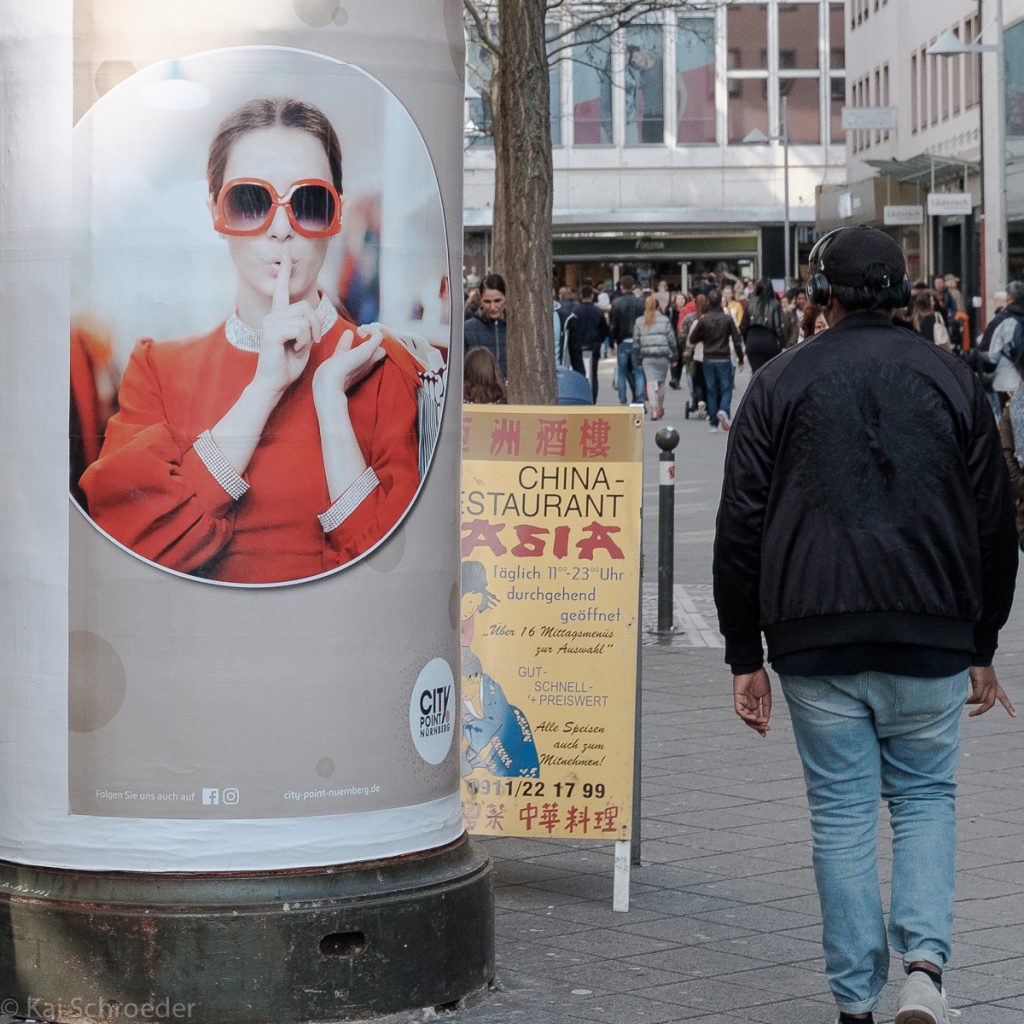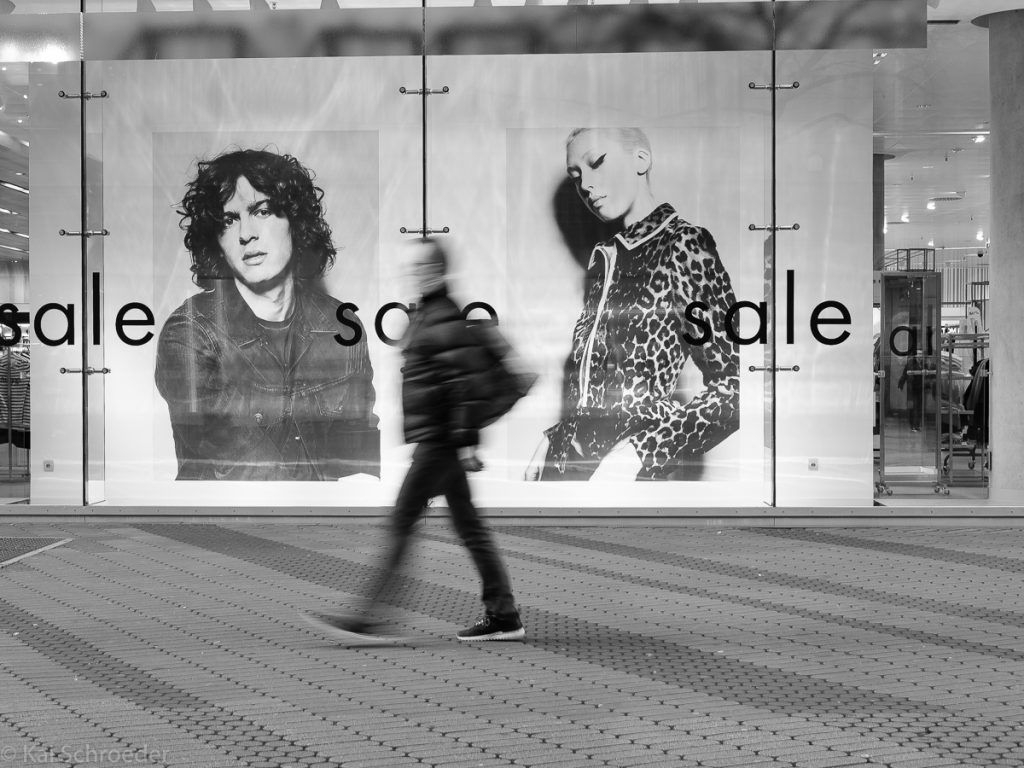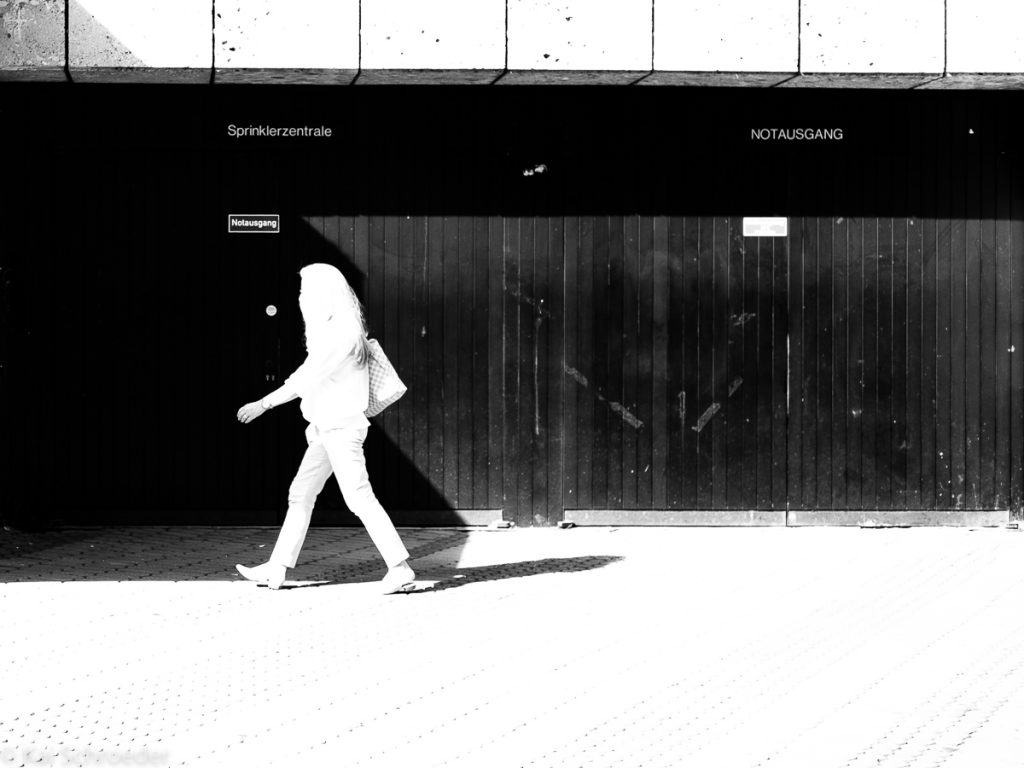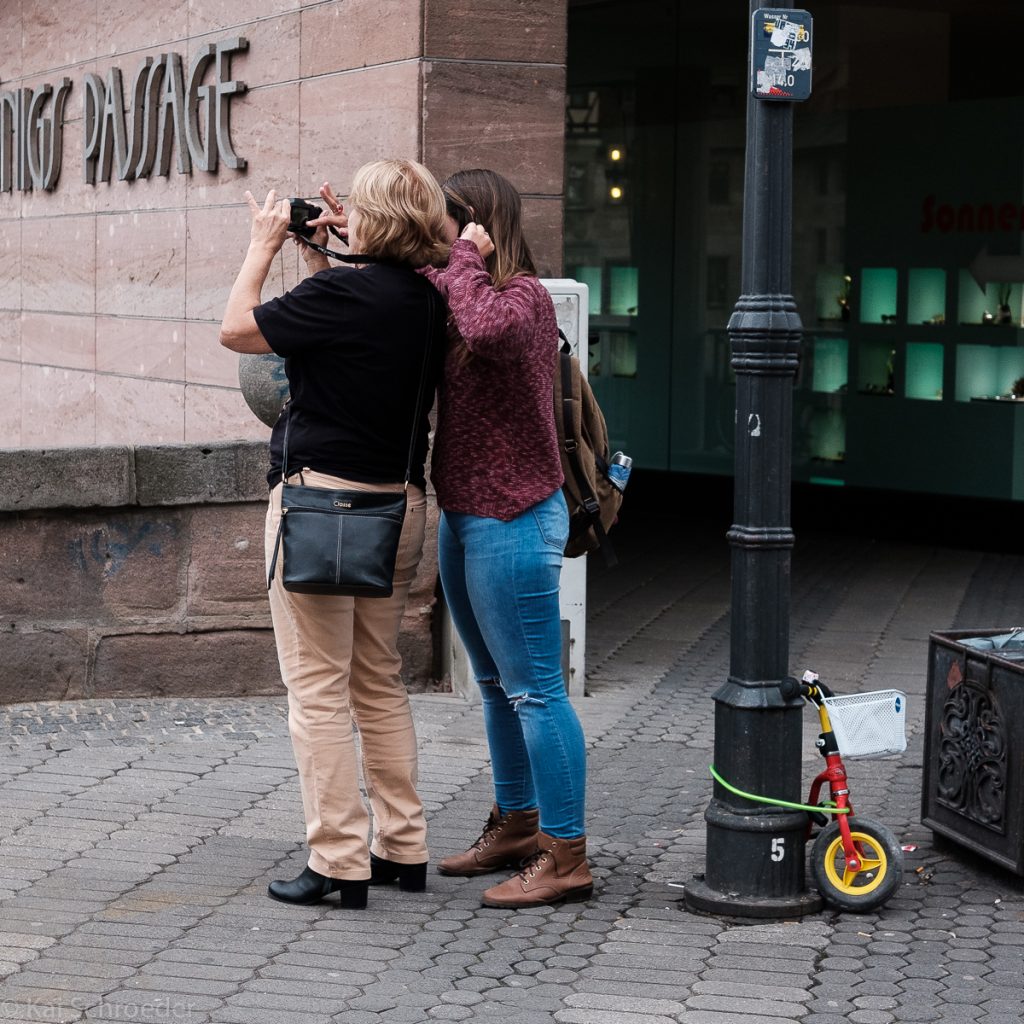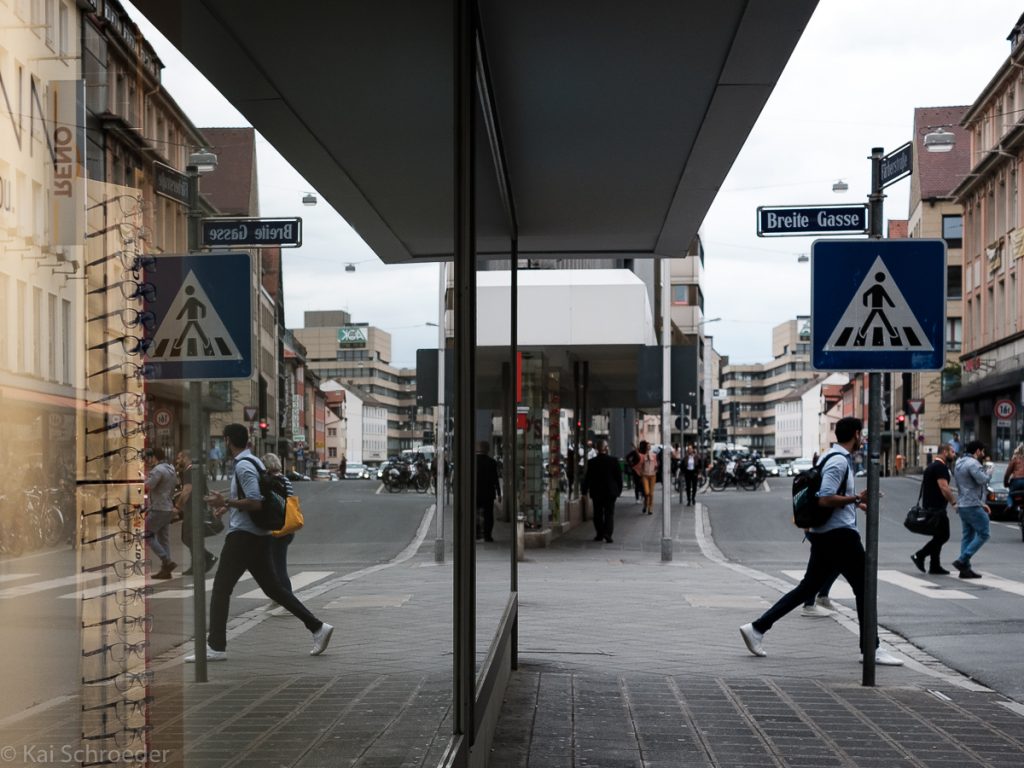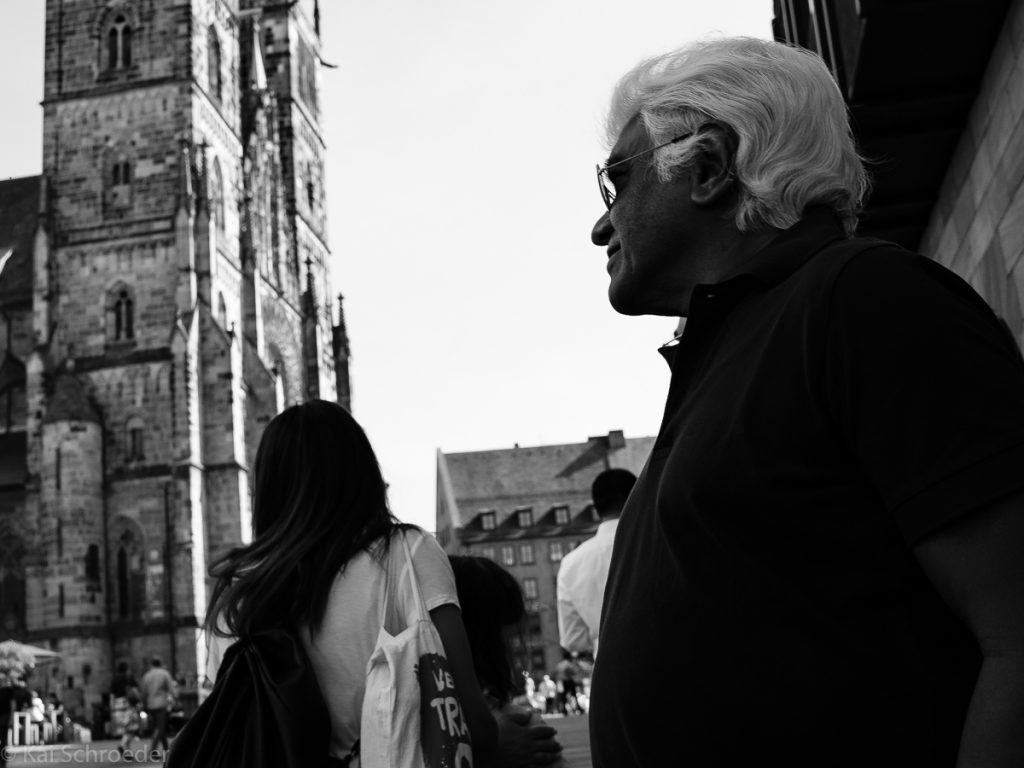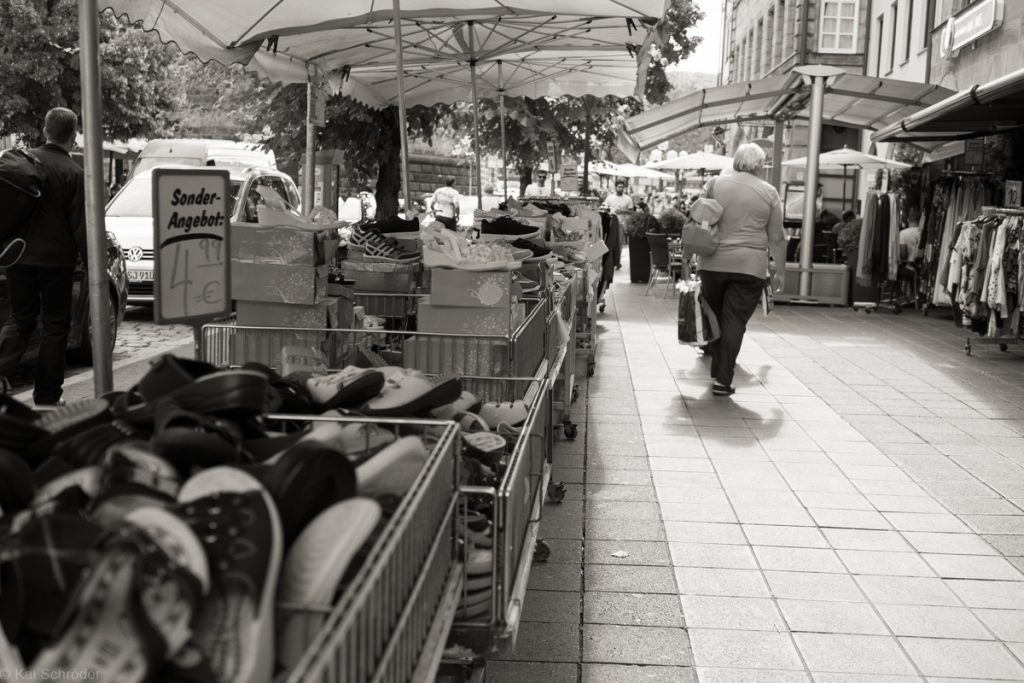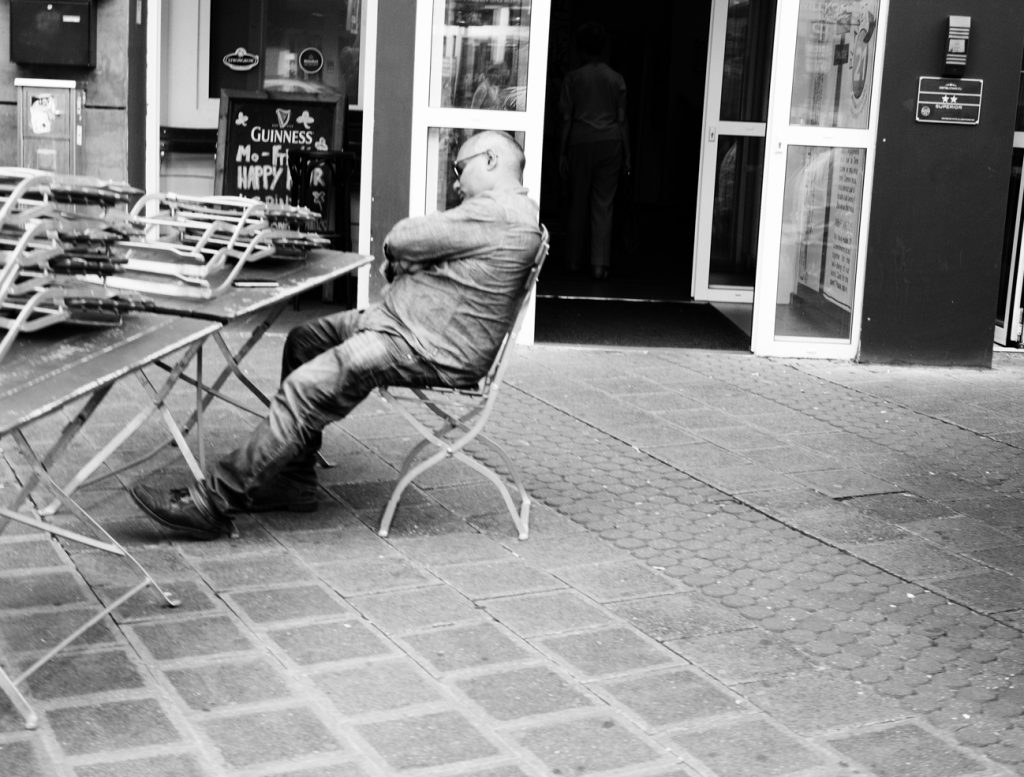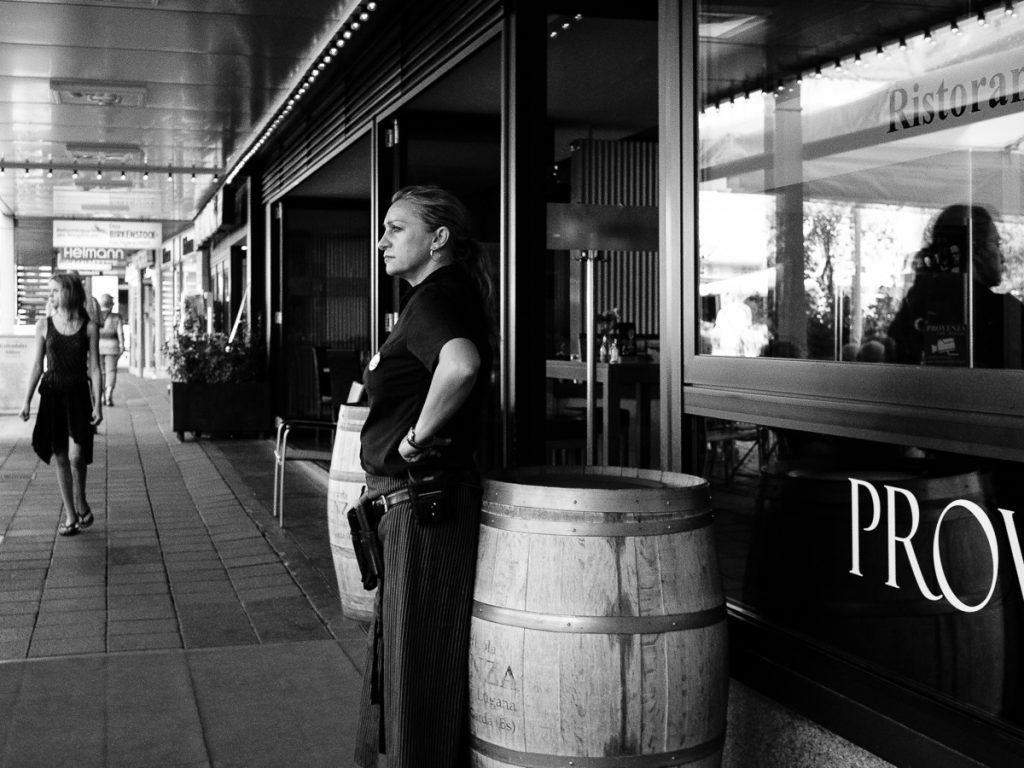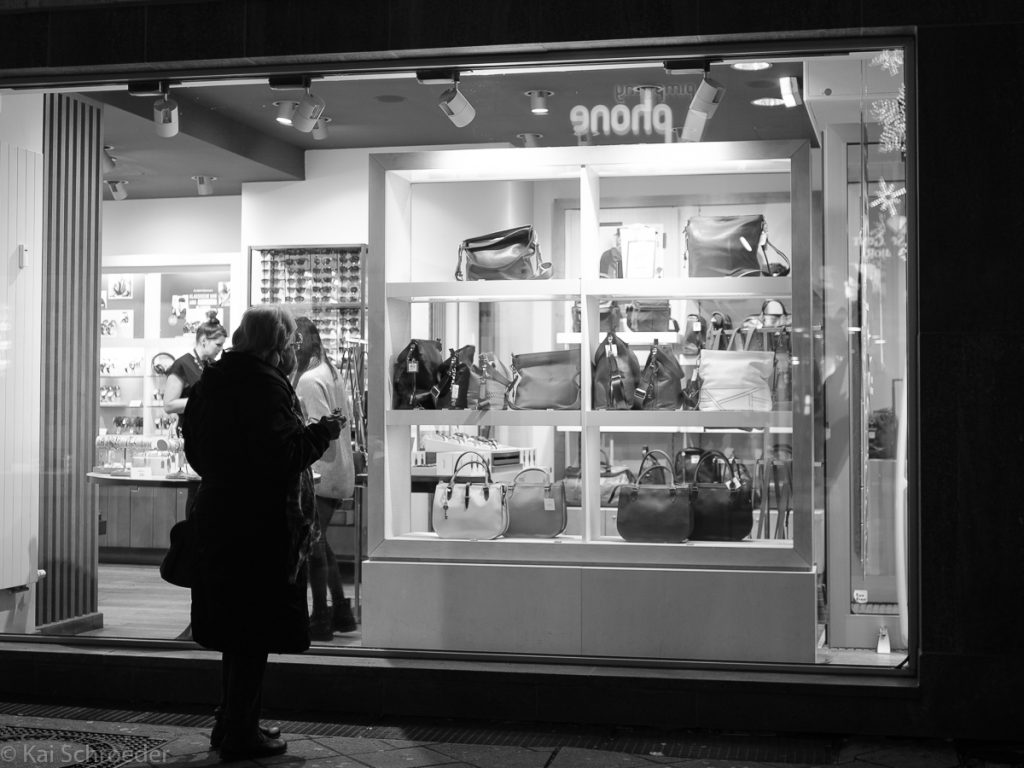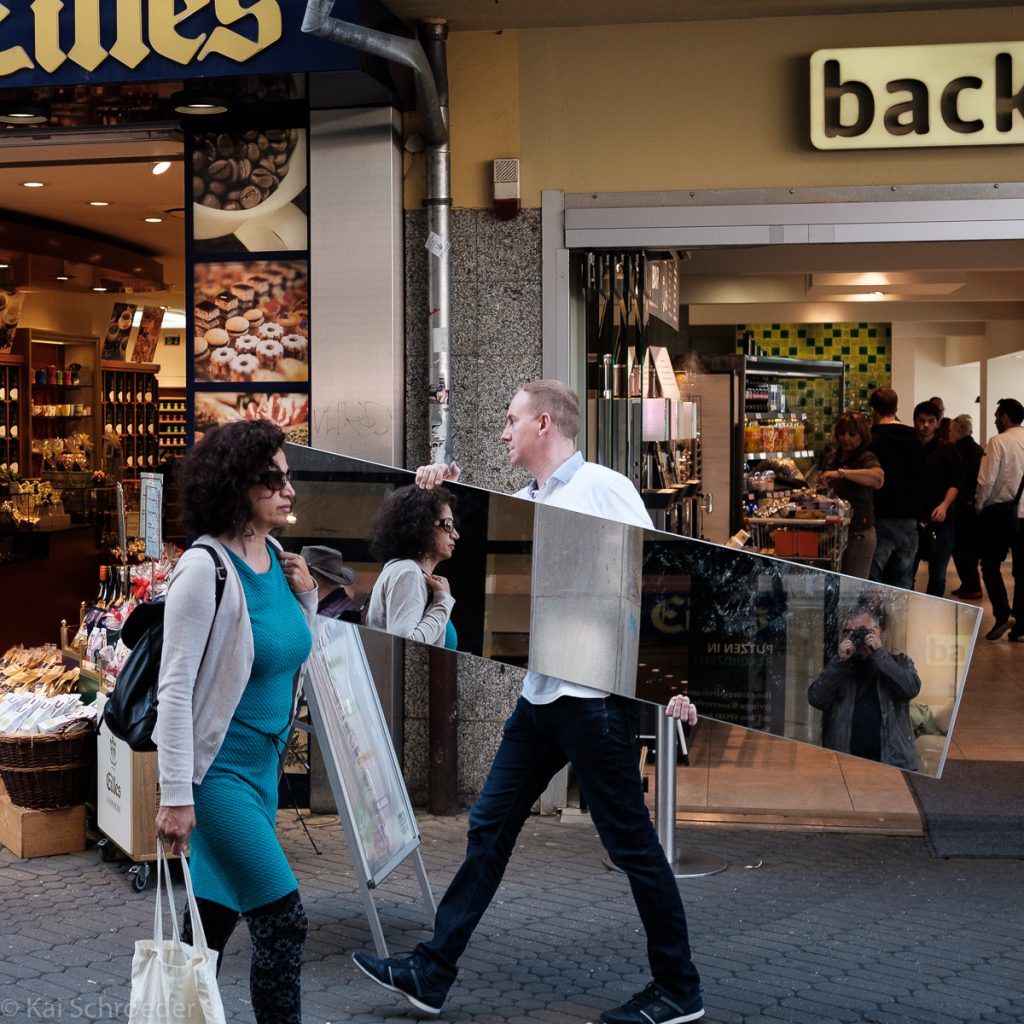Today a philosophical approach based on Martin Buber’s dialogue principle.[1] What is the relationship between the street photographer and the subject? What does this relationship do to me as a photographer? What dialogue arises between the photographer and a person as a subject?
The dialogic principle
There are two ways of looking at the motif of a street photo:
On the one hand as the subject, in the sense of Buber the relationship between “I” and “you”.
Or the point of view as an object, that is, in Buber’s sense, the relationship “I” to “It”.
The difference lies in the quality of the relationship.
Because you are more than it knows. You are doing more and more is happening to it than It knows.[2]
What does this mean in the context of street photography?
It is my decision as a photographer how I want to approach the subject:
If I want to relate to it, then I see it as “you”.
I cannot experience or describe the shape that confronts me: I can only realize it. And yet I see them, shining in the splendor of the opposite, more clearly than all the clarity of the experienced world.[3]
It is the world of the present in which I relate to the person to be photographed (or perhaps an animal, an object …). Something is happening between us in the form of a silent dialogue that does not need any words. One look, one eyelid lifting, one frown and a message is conveyed to me. A signal that I, as a photographer, can respond to. Maybe with a smile or a shrug or a few words – who knows?
In contrast, there is interaction with other in the form of “It”.
The person who has become ego-like and who says I-It stands in front of things, not opposite them in the stream of interactions; Bent over the individual with the objectifying magnifying glass of his close-up view or with the objectifying binoculars of his distant view, arranging them into a scenario, isolating them in the observation without a feeling of exclusivity or linking them in the observation without a feeling for the world – he could only do that in relation, this only from find her out.[4]
This is the world of the objective, the dehumanized. People become things, hidden behind the seeker – another world.
The example of ethical questions
The so far abstract, philosophically formulated can be understood by the inclined reader based on the ethical borderline cases of street
photography : How does the photographer handle when he has a homeless, needy person in front of his lens?
Does he see him as a person, i.e. in the I-You relationship?
Or does he distance himself from it in the form of the I-It relationship?
The former would require interaction with the person. An interpersonal contact, an exchange, possibly a conversation.
A question that every photographer decides for himself.
Systemic interaction and feedback
The contact between photographer and subject, be it in the form of the I-You or in the form of the I-It, is systemic.
Therefore it is a network of feedback loops – communication arises.
Dialogue is systemic and, as in any systemic relationship, it does something to me as a photographer.
To stay with the previous picture: As a photographer, does it leave me cold when someone else needs help? Or do I go up to him and offer my help? Or does it not leave me cold, but I turn away?
Why is my decision going one way or the other?
If you ask yourself this question, you can learn a lot about yourself. And also about the other.
I will on you; I will speak you. All real life is an encounter.[5]
Conclusion
The dialogue is part of the encounters a photographer encounters on the street while taking pictures. He cannot withdraw from this force of nature, he can only position himself. This decision says a lot about the person who takes photos and offers the opportunity to learn.
Street photography is therefore nothing more than learning from life.
1
[1] Martin Buber, The Dialogic Principle, 15th edition 2019, Lambert Schneider / Gütersloher Verlagshaus
[2] translated by Google – loc. Cit., P. 15
[3] translated by Google – loc. Cit., P. 16
[4] translated by Google – loc. Cit., P. 35
[5] translated by Google – loc. Cit., P. 17

